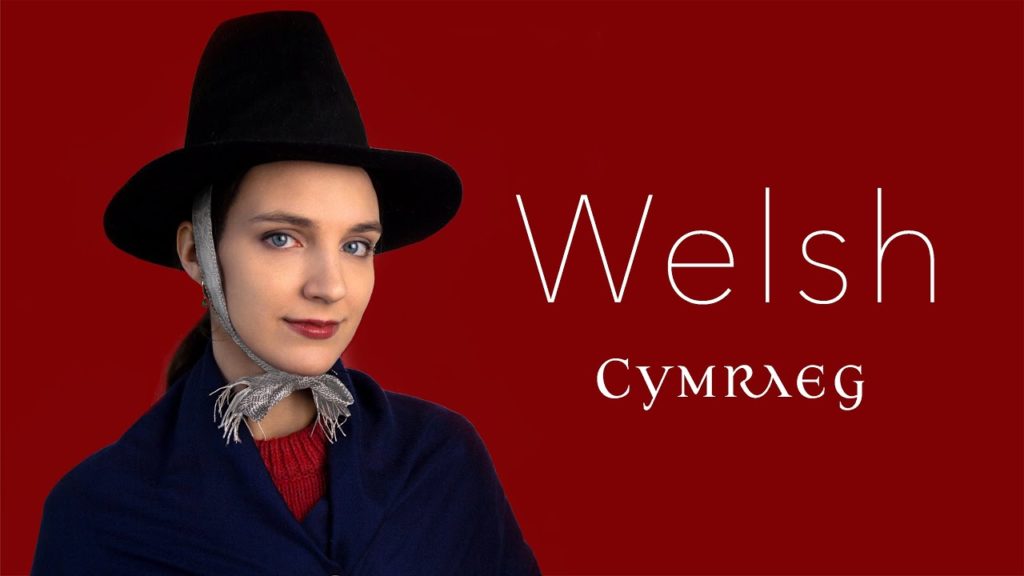Major Historic Ethnic Groups of Europe
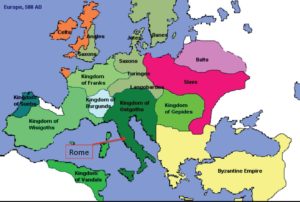
Author: Robert W. Penry @ 2021
As we pursue our family history, especially in medieval and earlier times, we come across names of ethnic groups associated with particular regions of Europe. There were many hundreds, perhaps over a thousand ethnic groups. These were then grouped into major groups. There were hundreds of Germanic tribes. However, we seldom see direct reference to these minor ethnic groups, but do find reference to Vikings, Saxon, Normans, Bretons, Franks, Goths, etc.
The following list was gleaned from: http://en.wikipedia.org/wiki/Category:Ethnic_groups_in_Europe, a website that shows all of the tribes of Europe. I have extracted those groups most often referred to in research.
Angles – The Angles is a modern term for a Germanic people, who took their name from the region of Angelin, a district located in Schleswig-Holstein, Germany. The Angles were one of the main groups that settled in Britain in the post-Roman period, founding several of the kingdoms of Anglo-Saxon England, and their name is the root of the name England..
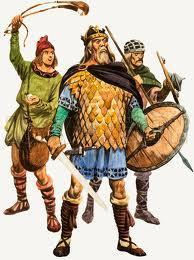
Basque – It is thought that Basques are a remnant of the early inhabitants of Western Europe, specifically those of the Franco-Cantabrian region. Basque tribes were already mentioned in Roman documents. There is enough evidence to support that at that time and later they spoke old varieties of the Basque language.
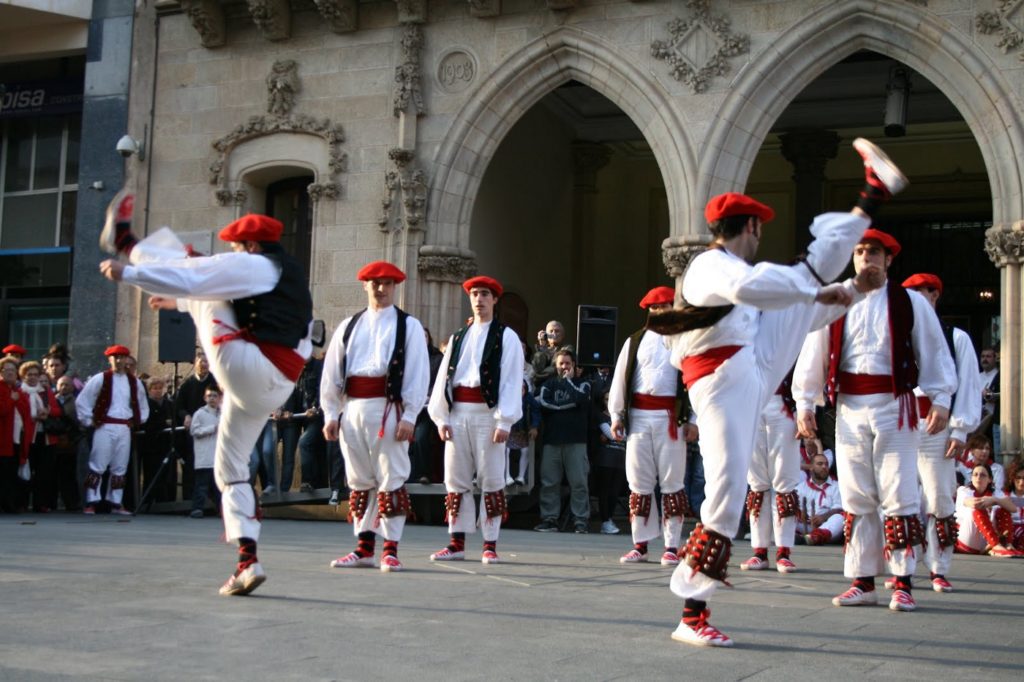
Breton – The Bretons are located in the region of Brittany in France. They trace much of their heritage to groups of Brythonic speakers who emigrated from southwestern Great Britain in waves from the 3rd to 6th century into the Armorican peninsula, subsequently named Brittany after them.
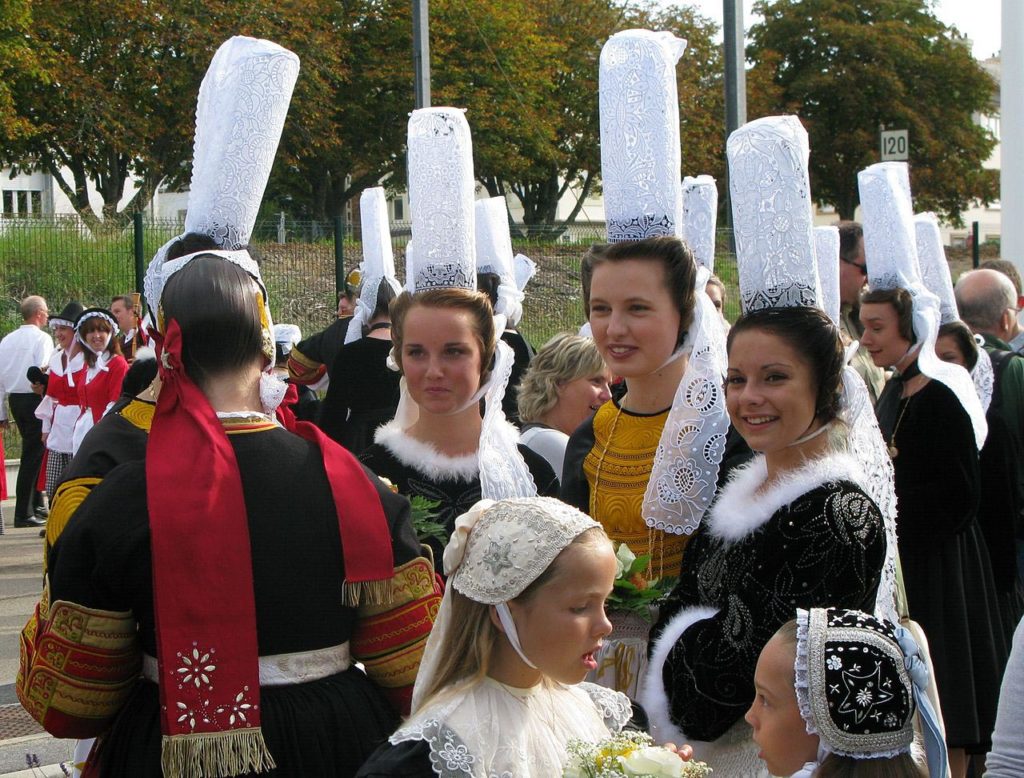
Britons – The Britons (sometimes Brythons or British) were the Celtic people culturally dominating Great Britain from the Iron Age until the Early Middle Ages. They spoke the Insular Celtic language known as British or Brythonic. They lived throughout Britain south of about the Firth of Forth; after the 5th century Britons also migrated to continental Europe, where they established the settlements of Brittany in France and the obscure Britonia in what is now Galicia, Spain. Their relationship to the Picts north of the Forth has been the subject of much discussion, though most scholars accept that the Pictish language during this time was a Brythonic language related to, but perhaps distinct from, British. By the 11th century their descendants had split into distinct groups. The British language developed into the distinct branches of Welsh, Cornish, Breton, and Cumbric which is often considered to be a form of Welsh.
Britons and Gauls settled in the northwestern corner of present-day France, the regions known today as Brittany. Celtic tradition survived in the region as it was geographically isolated from the rest of France, and many festivals and events can trace their origins to Celtic times. Many of the French “Bretons” also wear traditional Celtic hats called coiffes (which means “hats of Lace”), and roughly one-quarter of the region’s residents speak Breton, a Celtic language similar to Welsh.
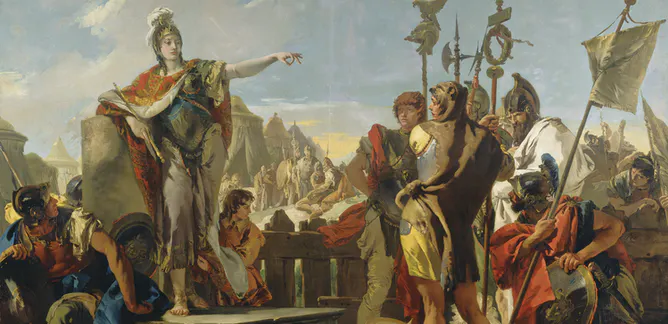
Celts – The Celts or Kelts were an ethno-linguistic group of tribal societies in Iron Age and Medieval Europe who spoke Celtic languages and had a similar culture. The earliest archaeological culture that may justifiably be considered as Proto-Celtic is the Late Bronze Age Urnfield culture of central Europe from the last quarter of the second millennium BC.
Their fully Celtic descendants in central Europe were the people of the Iron Age Hallstatt culture (c. 800-450 BC) named for the rich grave finds in Austria and by the later La Tène period (c. 450 BC up to the Roman conquest).
This Celtic culture had expanded over a wide range of regions, whether by diffusion or migration: to the British Isles (Insular Celts), France and The Low Countries (Gaul’s), Bohemia, Poland, and much of central Europe, the Iberian Peninsula and northern Italy and following the Gallic invasion of the Balkans in 279 BC as far east as central Anatolia (Galatians).
By mid-1st millennium AD, following the expansion of the Roman Empire and the Great Migrations (Migration Period) of Germanic peoples, Celtic culture and Insular Celtic had become restricted to Ireland, to the western and northern parts of Great Britain (Wales, Scotland, Cornwall, and the Isle of Man), and to northern France (Brittany).
Between the fifth and eighth centuries the Celtic-speaking communities of the Atlantic regions had emerged as a reasonably cohesive cultural entity. In language, religion, and art they shared a common heritage that distinguished them from the culture of surrounding polities.
The Continental Celtic languages ceased to be widely used by the 6th century. Insular Celtic culture diversified into that of the Gaels (Irish, Scottish and Manx) and the Brythonic Celts (Welsh, Cornish, and Bretons) of the medieval and modern periods.
A modern “Celtic identity” was constructed in the context of the Romanticist Celtic Revival in Great Britain, Ireland, and other European territories, such as Polish and Spanish Galicia. Today Irish, Scottish Gaelic, Welsh, and Breton remain spoken in parts of their historical territories, and both Cornish and Manx are currently undergoing revival.
Author: Robert W. Penry @ 2021
The word “Celt” is pronounced as “Kelt”. The only time we use it with a soft “C” or “S” sound is in “Celtics”, the name of a sports team in Scotland. Who were the Celts? According to an article published by History.com in 1997:
“The Celts were a collection of tribes with origins in central Europe that shared a similar language, religious beliefs, traditions and culture. It’s believed that the Celtic culture started to evolve as early as 1200 B.C. The Celts spread throughout western Europe—including Britain, Ireland, France and Spain—via migration. Their legacy remains most prominent in Ireland and Great Britain, where traces of their language and culture are still prominent today.”
Most scholars agree that they culture known as Celtic originated in the upper Danube region about 13th Century B.C. These people were called the “Urnfield people” and probably spoke a tongue that devolved into Celtic language. This group then became the Hallstat Culture which evidently declined and another group became prominent. This group was called the La Tène culture and spread throughout ancient France, Spain, and Central Europe.” (Source: Ancient History Encyclopedia – 2016)
But where did they come from? Who were they before they were Celts? They evidently were barbaric tribes. We have no written history to tell us. There are different opinions based on DNA. Some believe they came from Azerbaijan, others believe they could be descendants of the Scythians from the Steppes of Russia. The Romans around the eighth century B.C called them “Galli”, the root word for Gaul.
We know that the Celts split into two main language groups, the Brythonic and the Goidelic (Gaelic). The Brythonic evolved into Welsh, Cornish, and Breton. The Goidelic became Scottish Gaelic, Irish and Manx.
The Celts travelled and settled throughout most of Europe, constantly moving northward until they crossed the English Channel as separate tribes connected by cultural similarities. The similarities were often pagan beliefs, language, clothing or social customs. Each tribe was independent – there was never a central Celtic government.
There are many books and web pages about Celts. They were and are a fascinating people. They live on in legends, historical fiction, even comic strips. A Belgian-French comic strip “Asterik and Obelix” about the conflict between Celtic Gauls and Roman invaders is well known and has been running since 1959 and takes place in 50 B.C. Gaul.
King Arthur of legend was Celtic warrior who fought against the invading Anglo-Saxons, a Germanic people.
Celtic myths gave rise to many superstitions and customs that live on. Example: A rabbit’s foot will bring good luck. Knock on Wood – Celtic good spirits lived in trees. Cross Your fingers – Celtic sign of the cross. Four-Leaf Clover – Irish Celts. Pooka – Irish Celtic folklore.
Celtic art is still popular. Examples: Celtic wedding bands, Celtic Crosses, Celtic design Gift Wrapping Paper, Celtic Knot, Celtic Tartans, Celtic Rose, etc.
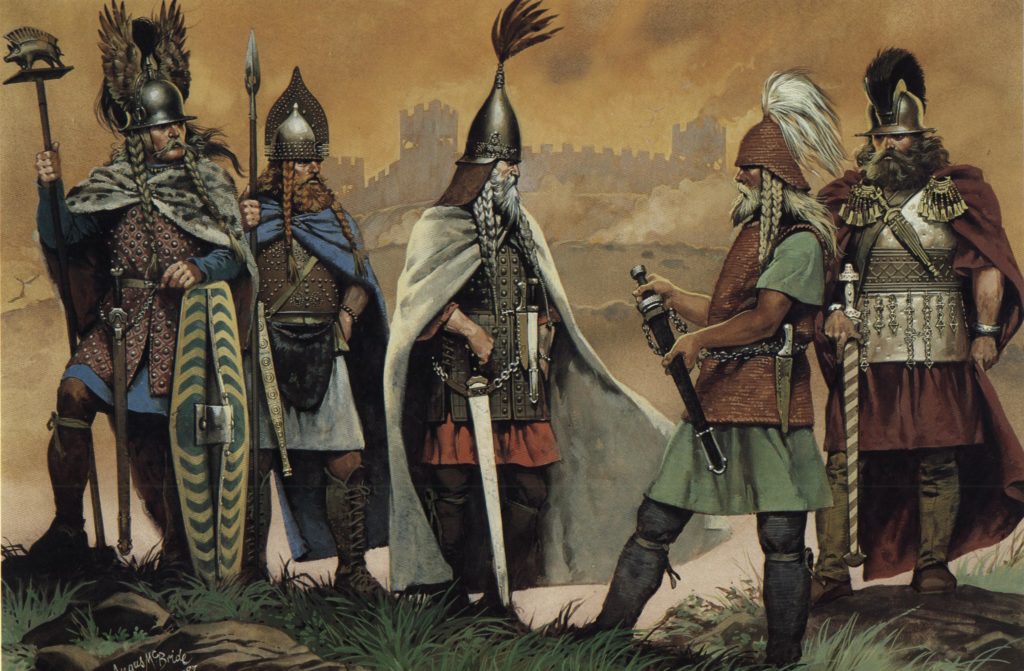
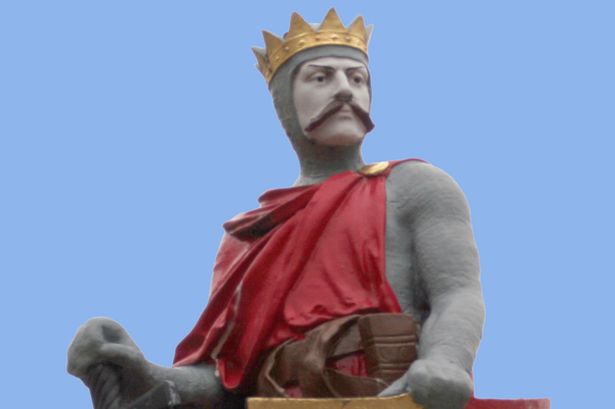
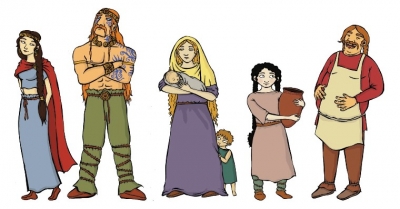
Galatians. Several tribes made up the larger population of the Celtic people. Indeed, the Gaels, Gauls, Britons, Irish and Galatians were all Celtic tribes.
The Galatians occupied much of the Asturias region of what is now northern Spain, and they successfully fought off attempted invasions by both the Romans and the Moors, the latter ruling much of present-day southern Spain. Evidence of Galatian tradition remains in the region today. Descendants of the Galatians still participate in ancient outdoor dances, accompanied by bagpipes, an instrument that is often associated with more well-known Celtic regions such as Scotland and Ireland. In addition, a Celtic . The Galatians also settled in nearby Galicia, a region on the northwest coast of Spain.
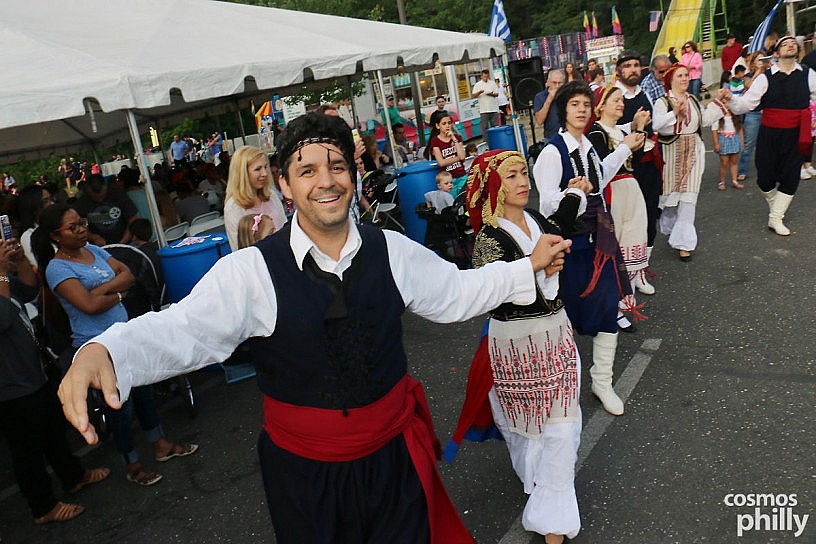
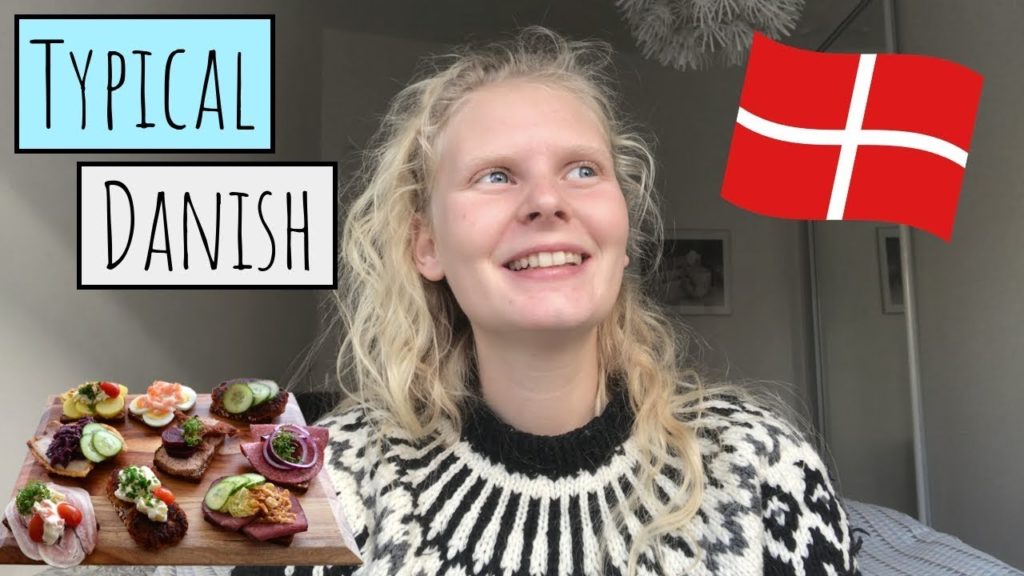
Franks– The Franks were a confederation of Germanic tribes first attested in the third century AD as populating a broad strip of land on the right bank of the Lower and Middle Rhine River. From the third to fifth centuries some Franks raided Roman territory while other Franks joined the Roman troops in Gaul. Only the Salian Franks formed a kingdom on Roman-held soil that was acknowledged by the Romans after 357. In the climate of the collapse of imperial authority in the West, the Frankish tribes were united under the Merovingians and conquered all of Gaul except Septimania in the 6th century. The Salian political elite was one of the most active forces in spreading Christianity over Western Europe. The Franks had created one of the strongest and most stable barbaric kingdoms. The Merovingian dynasty, descended from the Salians, founded one of the Germanic monarchies which replaced the Western Roman Empire from the fifth century. The Frankish state consolidated its hold over large parts of Western Europe by the end of the eighth century, developing into the Carolingian Empire which dominated most of Western Europe. This empire would gradually evolve into France and the Holy Roman Empire. Because the Franks for a time ruled most of Western Europe and because of their tight political affiliation with the Church in Rome, the term Frank was often used historically as a synonym for Roman Catholic in the Middle Ages, particularly as a contrast to Byzantine and other eastern Christians.
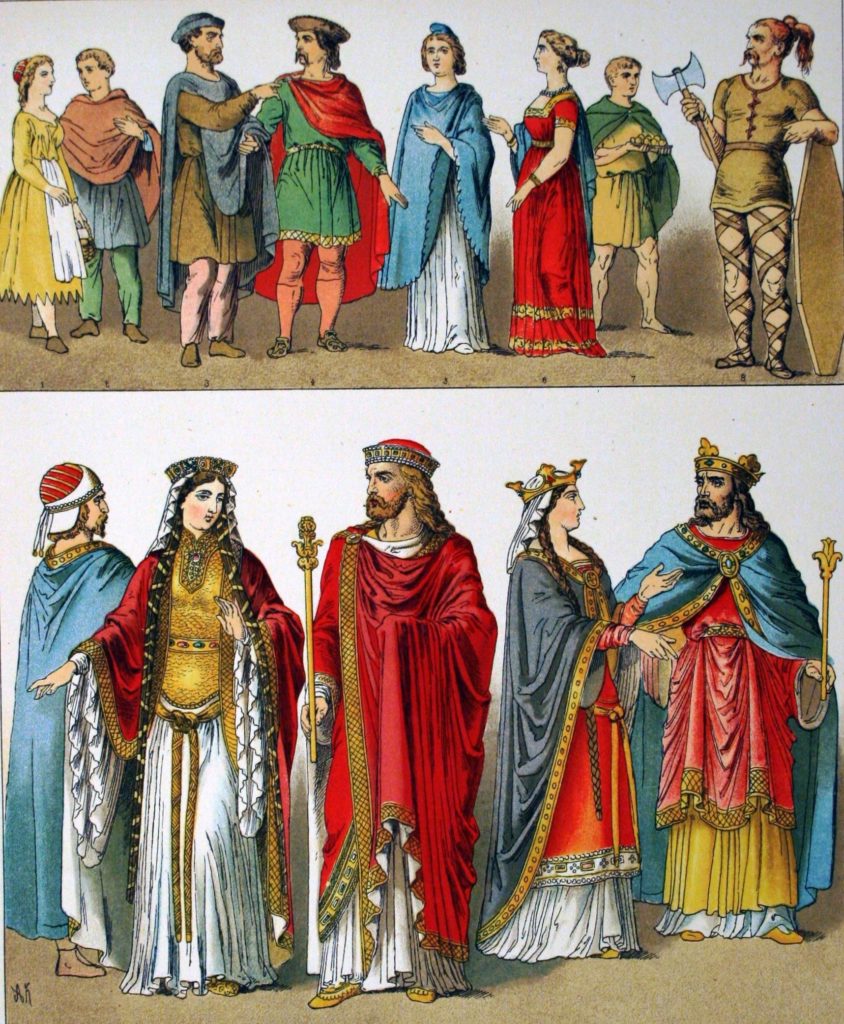
French – The French (French: Français) are a nation that share a common French culture and speak the French language as a mother tongue. Historically, the French population are descended from peoples of Celtic, Latin and Germanic origin, and are today a mixture of several ethnic groups. Within France, the French are defined by citizenship, regardless of ancestry or country of residence.

Gael – The Gaels or Goidels are speakers of one of the Goidelic Celtic languages: Irish, Scottish Gaelic and Manx. Goidelic speech originated in Ireland and subsequently spread to western and northern Scotland and the Isle of Man. The modern English term Gael derives ultimately from the Old Irish (Ancient Gaelic) word Goídel, which was spelled in various ways by Gaelic writers at different times. The modern Gaelic spellings are Gael (Irish) and Gàidheal (Scottish Gaelic).
Gauls – The Gauls were a Celtic people living in Gaul, the region roughly corresponding to what is now France, Belgium, Switzerland and Northern Italy, from the Iron Age through the Roman period. They mostly spoke the Continental Celtic language called Gaulish.. By the arrival of the Franks during the Migration Period (5th century), the Gaulish language had been replaced by Vulgar Latin.
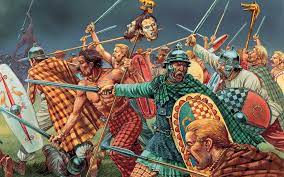
Goths – The Goths were an East Germanic tribe whose two branches, the Visigoths and the Ostrogoths, played an important role in the fall of the Roman Empire and the emergence of Medieval Europe.
Ostrogoths – The Ostrogoths were a branch of the Goths. The Ostrogoths, under Theodoric the Great, established a kingdom in Italy in the late 5thand 6th centuries. The Ostrogoths traced their origins to the Greutungi and a semi-legendary kingdom north of the Black Sea in the 3rdand 4th centuries. Invading southward from the Baltic Sea, the Ostrogoths built up a huge empire stretching from the Dniester to the Volga River and from the Black Sea to the Baltic shores.
Visigoths – These were one of two main branches of the Goths. These tribes were among the Germanic peoples who spread through the late Roman Empire during Late Antiquity or the Migration Period. The Visigoths emerged out of the Gothic groups who entered the Roman Empire in and after 376 and defeated the Romans at the Battle of Adrianople in 378. The Visigoths invaded Italy under Alaric I and famously sacked Rome in 410 AD, eventually settling in Spain and Portugal, where they founded a powerful Kingdom. After numerous years of migration, which led the Visigoths to compare themselves to the Biblical Hebrew people wandering for 40 years in the Sinai Desert, the Visigoths settled in southern Gaul as foederati of the Romans in 418. For unknown reasons, they soon fell out with their hosts and established their own kingdom with its capital at Toulouse. Extending their authority into Hispania at the expense of the Vandals, their rule in Gaul was ended by the Franks under Clovis I at the Battle of Vouilléin 507. Thereafter the only territory north of the Pyrenees that the Visigoths held was Septimania such that their kingdom became limited to Hispania. The province came to be dominated by the Visigothic small governing elite at the expense of the Byzantine province of Spania and the Suebic Kingdom of Galicia.
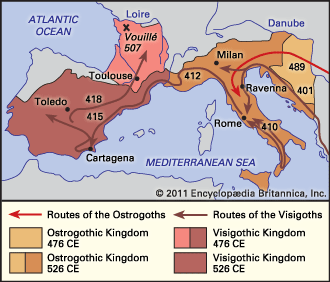
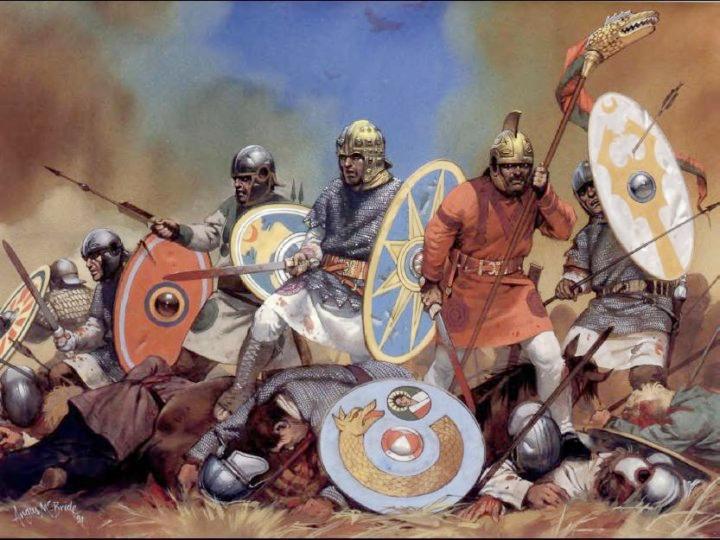
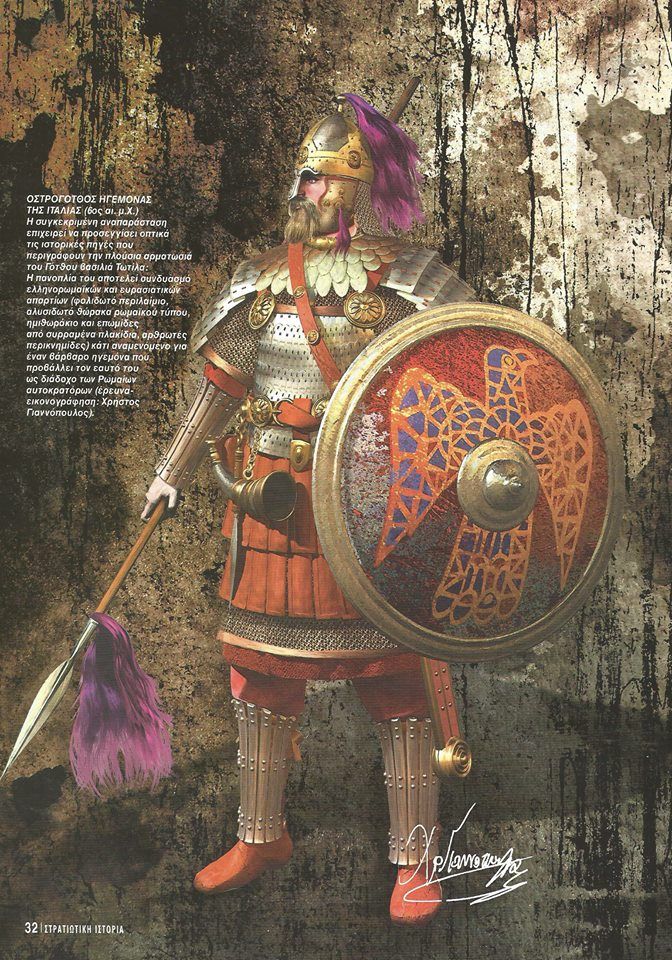
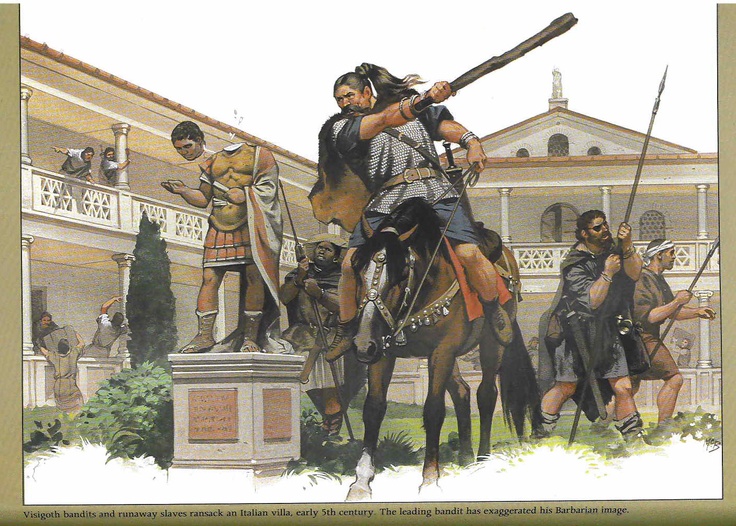
Greeks – The Greeks, also known as the Helleni, are a nation and ethnic group native to Greece, Cyprus and other regions. They also form a significant diaspora with Greek communities established around the world. Greek colonies and communities have been historically established in most corners of the Mediterranean, but Greeks have always been centered around the Aegean Sea, where the Greek language has been spoken since antiquity. Until the early 20th century, Greeks were uniformly distributed between the Greek peninsula, the western coast of Asia Minor, Pontus, Egypt, Cyprus and Constantinople; many of these regions coincided to a large extent with the borders of the Byzantine Empire of the late 11th century and the Eastern Mediterranean areas of the ancient Greek colonization.
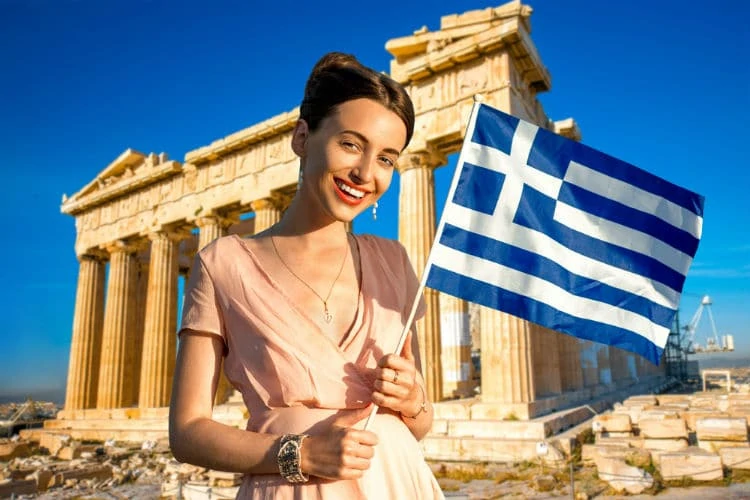
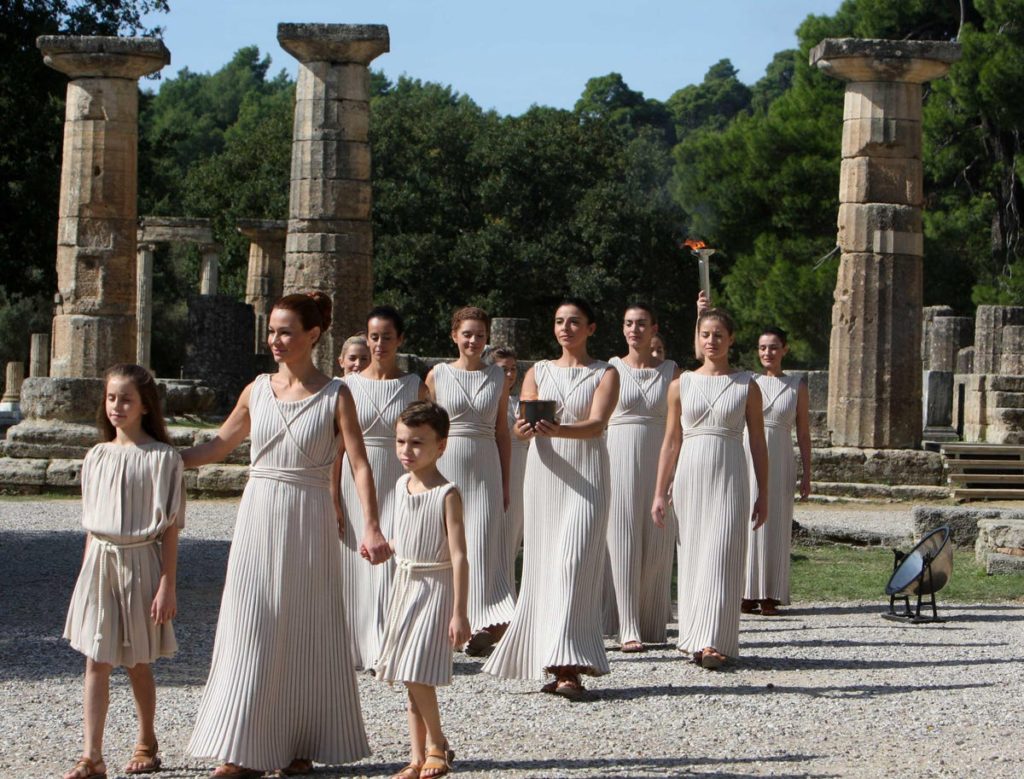
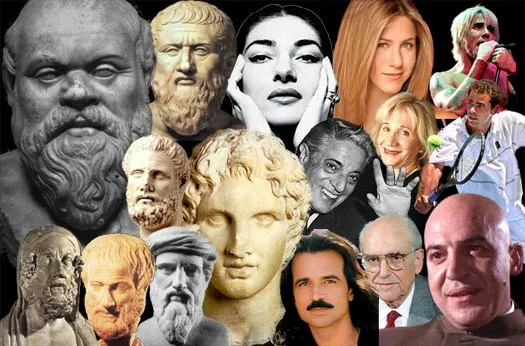
Gypsies – The Romani are an ethnic group living mostly in Europe, who trace their origins to the Indian Subcontinent. Romani are widely known in the English-speaking world by the exonym Gypsies (or Gipsies). They are known collectively in the Romani language as Romane or Rromane (depending on the dialect concerned) and as Romany, Romanies, Romanis, Roma or Roms. Romani are widely dispersed, with their largest concentrated populations in Europe, especially the Roma of Central and Eastern Europe and Anatolia, followed by the Kale of Iberia and Southern France.
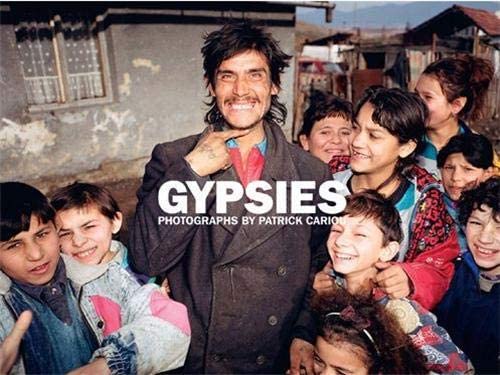
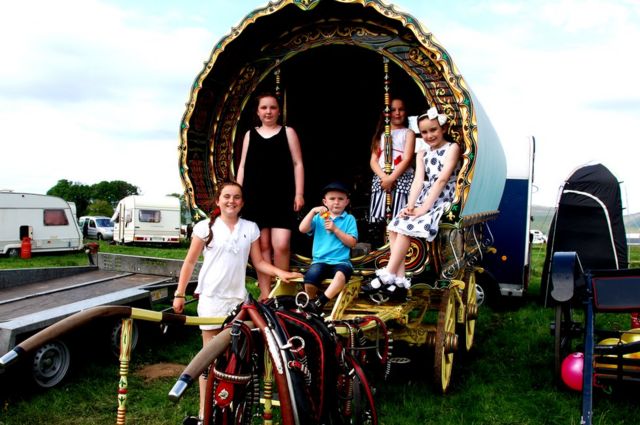
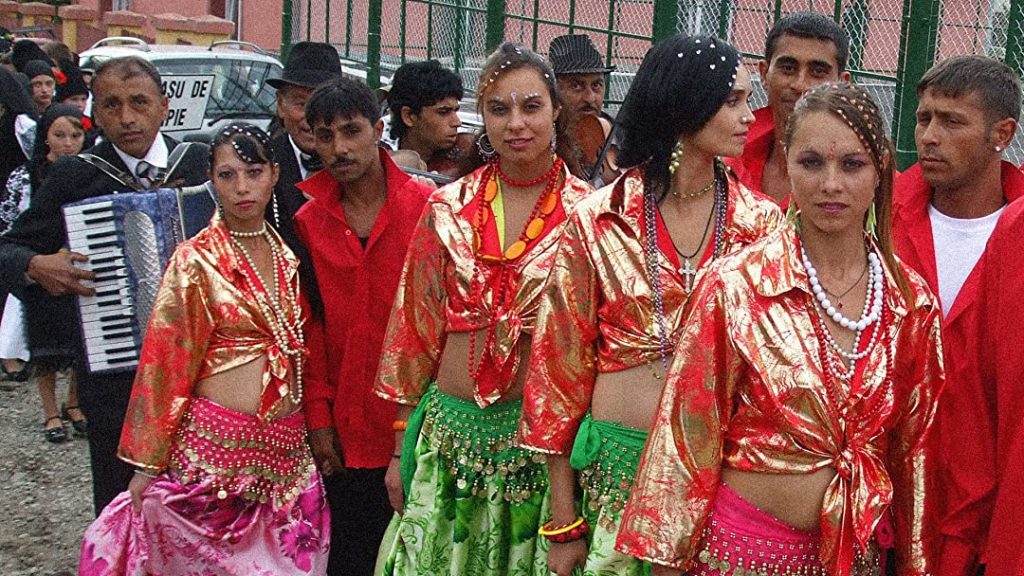
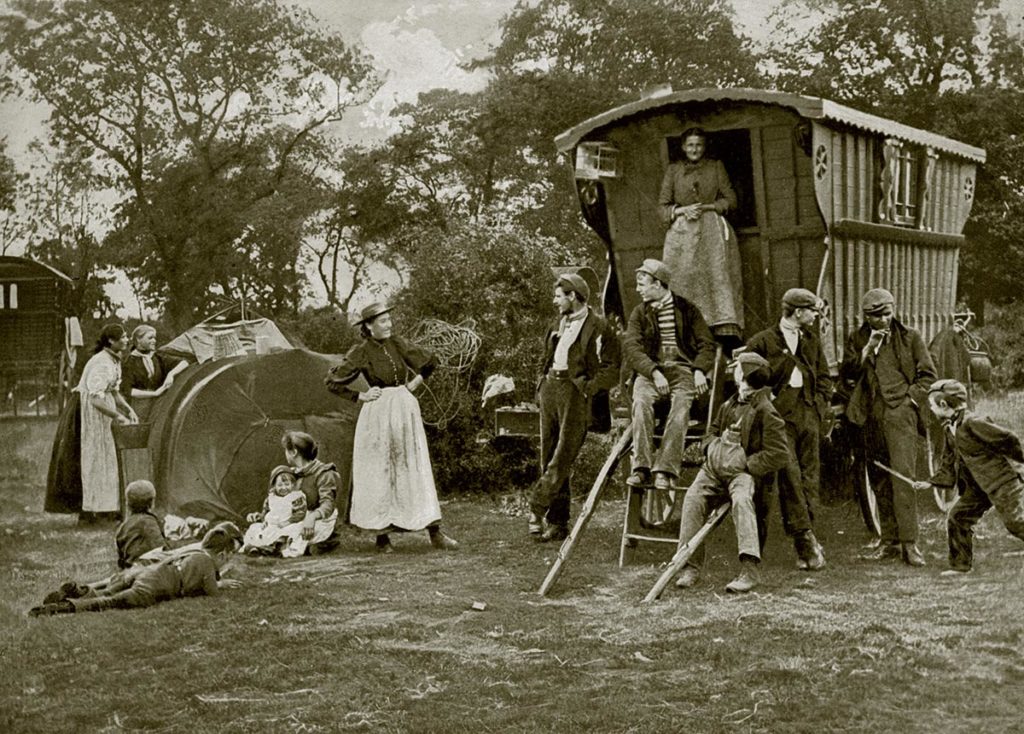
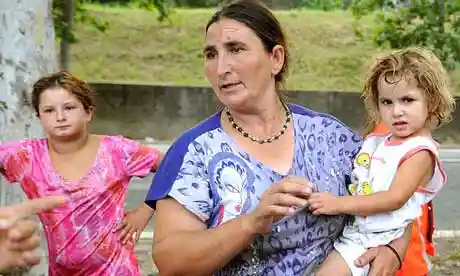
Huns – The Huns were a group of nomadic people who, appearing from east of the Volga River, first mentioned as Hunnoi by Tacitus as being near the Caspian Sea in 91 AD, migrated to the southeastern area of the Caucasus by about 150 AD and into Europe. 370 AD and established a vast Hunnic Empire there.
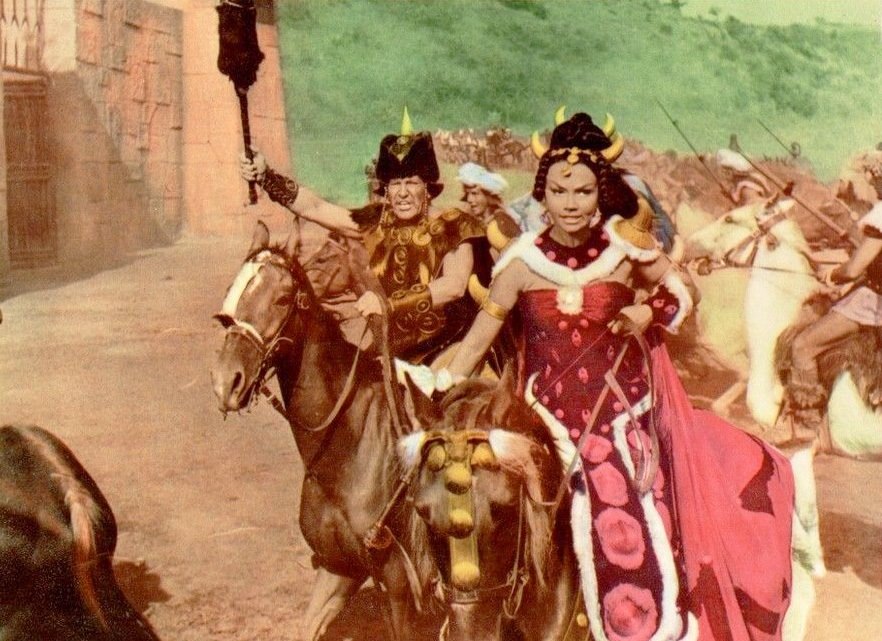
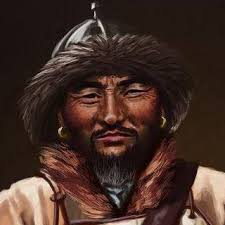
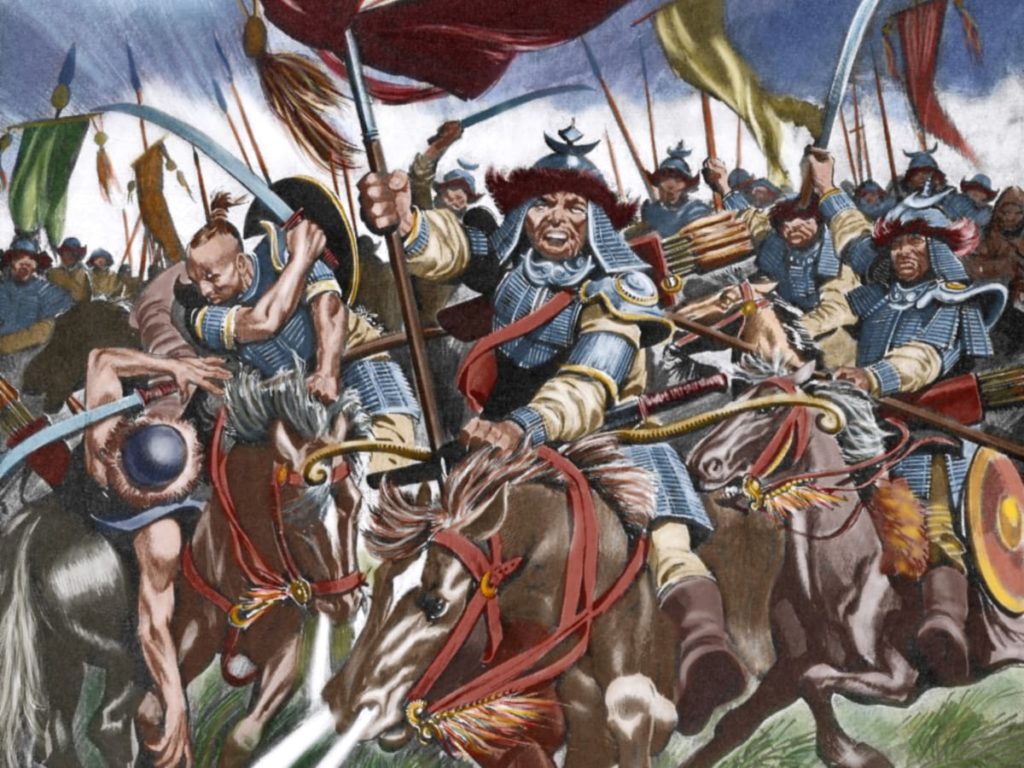
Irish – The Irish people (Ulster-Scots) are an ethnic group who originated in Ireland, an island in northwestern Europe. Ireland has been populated for around 9,000 years. The Irish people’s earliest ancestors are recorded in legends – they are claimed to be descended from various legendary groups such as the Nemedians, Fomorians, Fir Bold, Tuatha Dé Danann and the Milesians. The main groups that interacted with the Irish in the Middle Ages include the Picts, Scots, and the Vikings. Due to this contact, Icelanders are noted for having some Irish descent. The Anglo-Norman invasion of the High Middle Ages, the English plantations and the subsequent English rule of the country introduced the Normans and Flemish into Ireland. Welsh, Picts, Bretons, and small parties of Gauls and even Anglo-Saxons are known in Ireland from much earlier times.


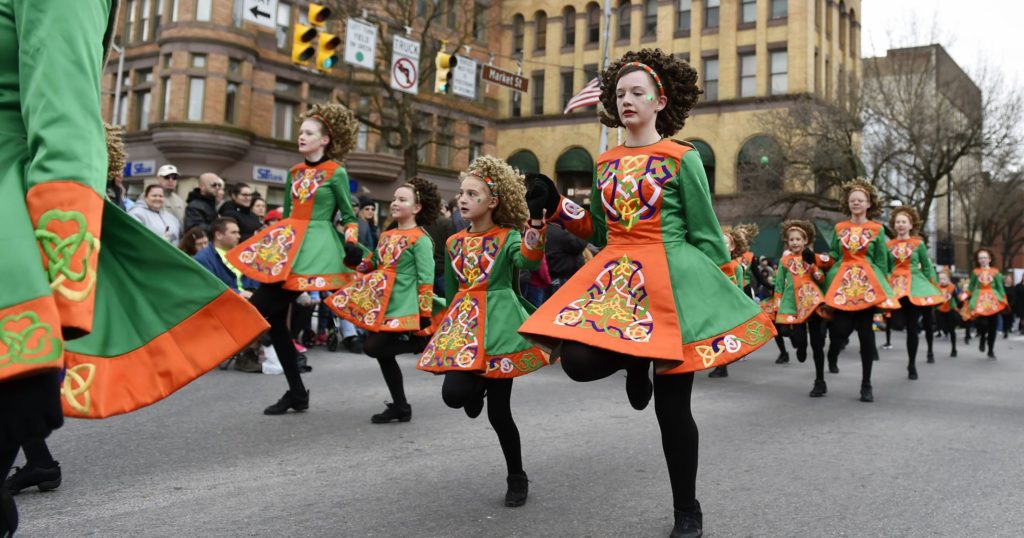

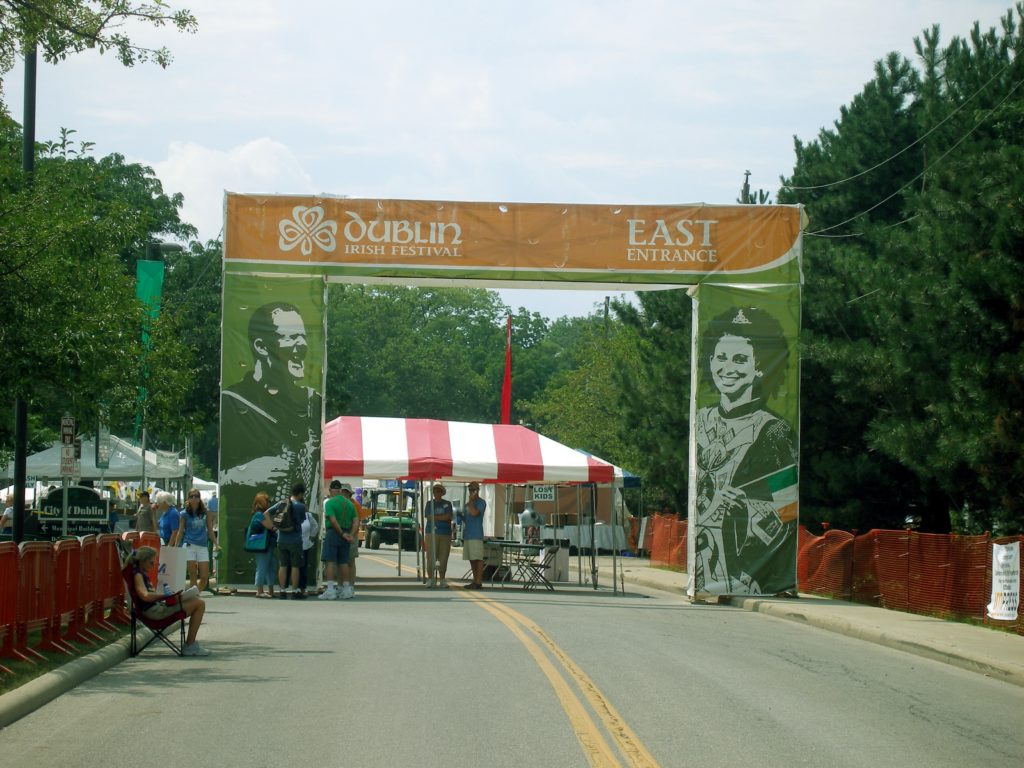
Italians – Italians (Italian:italiani) are a European ethnic group native to Southern Europe that share a common Italian culture, ancestry and speak the Italian language as a mother tongue. The original Indo-European tribes of the Italic people settled in neolithnic times in the Italian peninsula. Usually, these tribes were historically divided between Veneti, Latins, Siculi, Umbrians, Osci, etc. Successively they were united and amalgamated by Rome, together with the Etruscans in central Italy, Celtic Gauls in the Po River plains, and Greeks in the so-called Magna Grecia. Most Italians originate from the people mentioned above, and all share common Roman Latin heritage, but some Italians have a variety of other ancestries. There was extensive immigration into Rome from peoples of Roman imperial territories, Juvenal wrote “Long since Syrian Orontes has flown into the River Tiber and has brought with it its language and manners”. There were large numbers of slaves held by the Romans in Italy, with estimates of 2 million slaves in Roman Italy by 28 BC, accounting for approximately one third of the population of Italy. There are some Italians across Italy who have Germanic heritage from the occupation of Italy by several Germanic tribes. The Germanic tribe of the Ostrogoths conquered Italy and presented themselves as upholders of Roman culture, mixing Roman culture together with Gothic culture, to legitimize their rule amongst Roman subjects who had a long-held belief in the superiority of Roman culture over foreign “barbarian” Germanic culture. The total number of the population of Ostrogoths who settled in Italy was small, estimated at 40,000 people, while the total population of both the Ostrogoths and their allies who occupied Italy is estimated at 100,000 people. The Germanic tribe of the Lombards invaded Italy, which in the meantime had been reconquered by the East Roman Empire and conquered most of it. However, only a small number of Lombards settled in Italy, in comparison with the overwhelming majority of the indigenous Latin population.
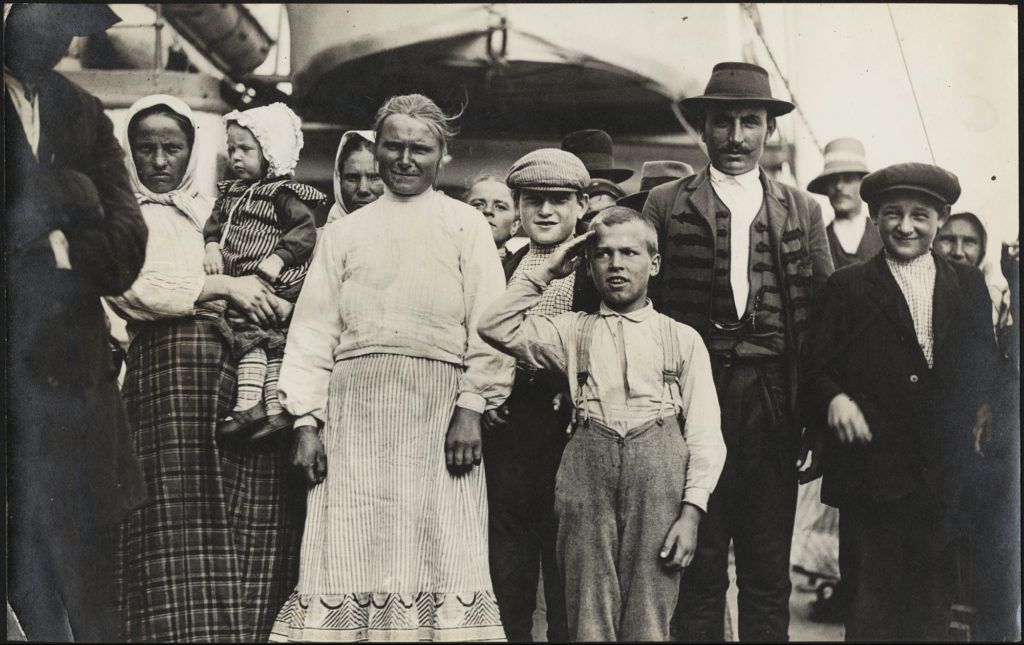
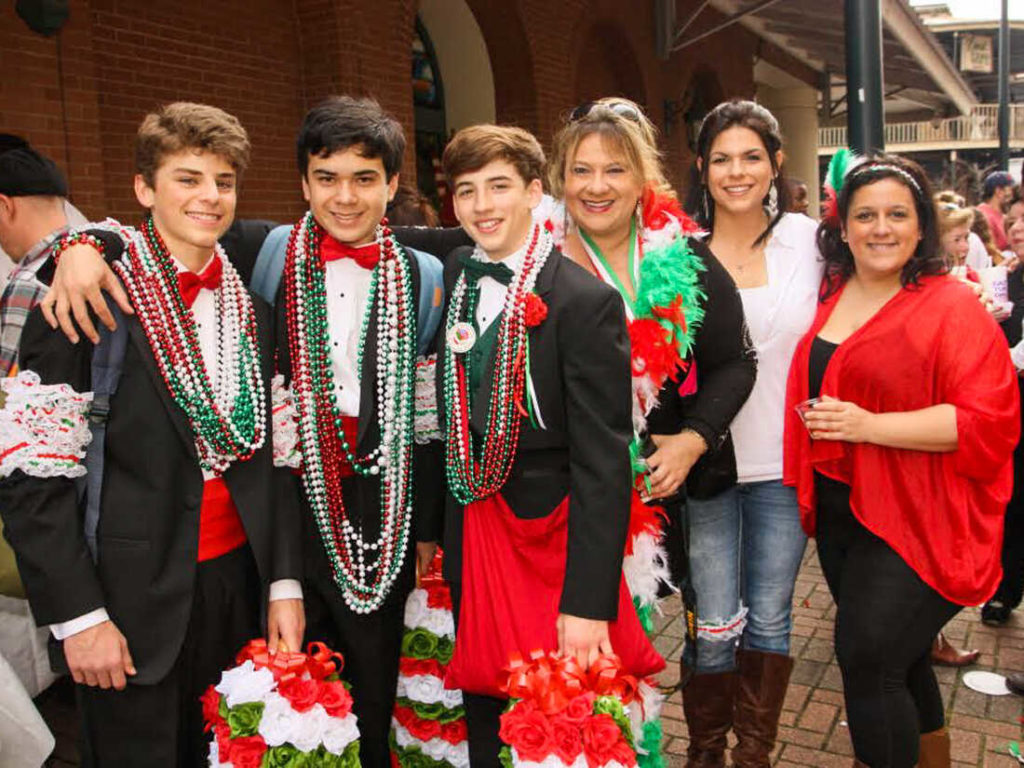

Jews – The Jews, also known as the Jewish people, are a nation and an ethno-religious group, originating in the Israelites or Hebrews of the Ancient Near East. The Jewish ethnicity, nationality, and religion are strongly interrelated, as Judaism is the traditional faith of the Jewish nation.

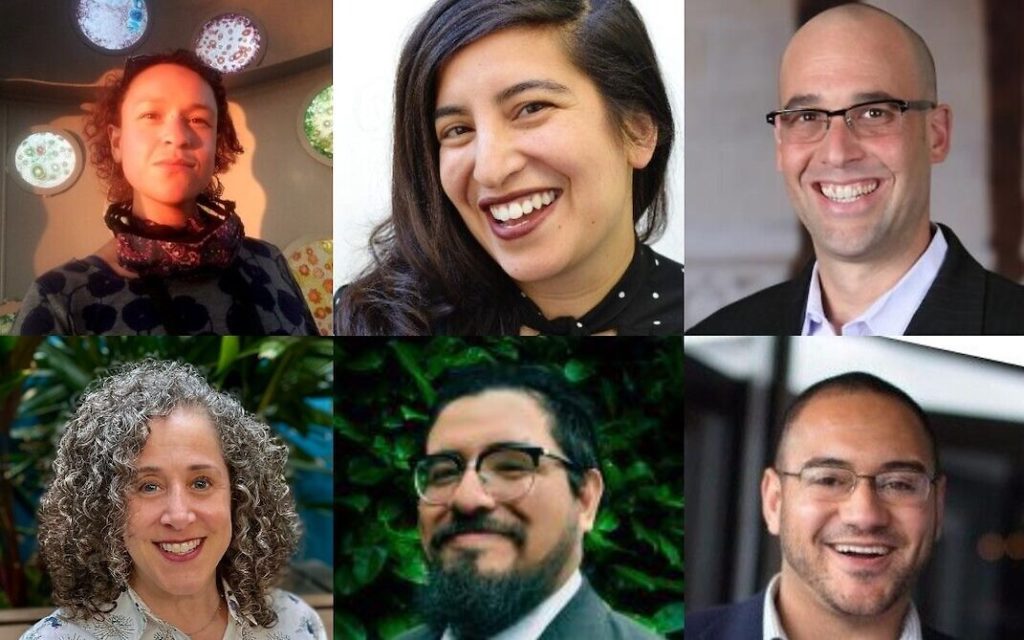

Jutes – The Jutes, Iuti, or Iutæ were a Germanic people who, were one of the three most powerful Germanic peoples of their time, the other two being the Saxons and the Angles. They are believed to have originated from Jutland peninsula (called Iutum in Latin) in modern Denmark, Southern Schleswig (Southern Jutland) and part of the East Frisian coast in northern Germany
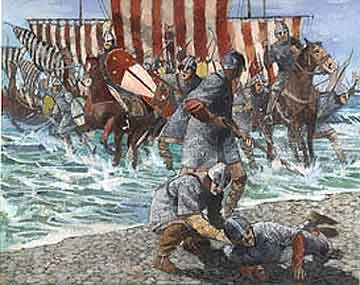
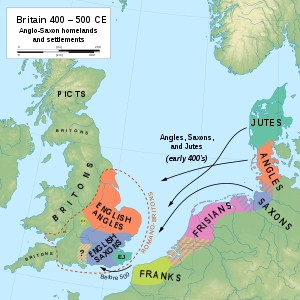

Lombards – The Lombards or Langobards were a Germanic tribe who from 568 to 774 ruled a Kingdom in Italy. Lombards descended from a small tribe called the Winnili, dwelling in southern Scandinavia (Scadanan), who had migrated southward to seek new lands. In the 1st century AD, they formed part of the Suebi in northwestern Germany. By the end of the 5th century, they had moved into the area roughly coinciding with modern Austria north of the Danube river. After 554, Alboin decided to lead his people to Italy, which had become severely depopulated after the long Gothic War (535–554) between the Byzantine Empire and the Ostrogothic Kingdom there. The Lombards were joined by numerous Saxons, Heruls, Gepids, Bulgars, Thuringians, and Ostrogoths, and their invasion of Italy was almost unopposed. They established a Lombard Kingdom in Italy, later named Regnum Italicum (“Kingdom of Italy”). In 774, the Kingdom was conquered by the Frankish King Charlemagne, and integrated into his Empire. However, Lombard nobles continued to rule parts of the Italian peninsula well into the 11th century, when they were conquered by the Normans, and added to their County of Sicily. Their legacy is apparent in the regional appellation, Lombardy.
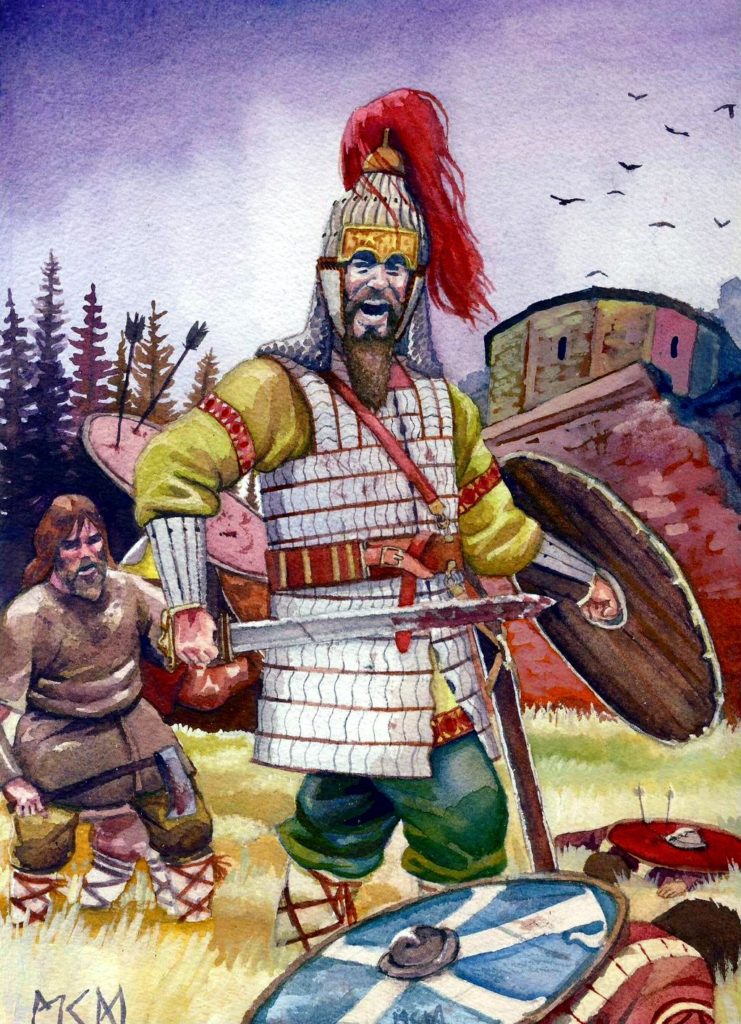

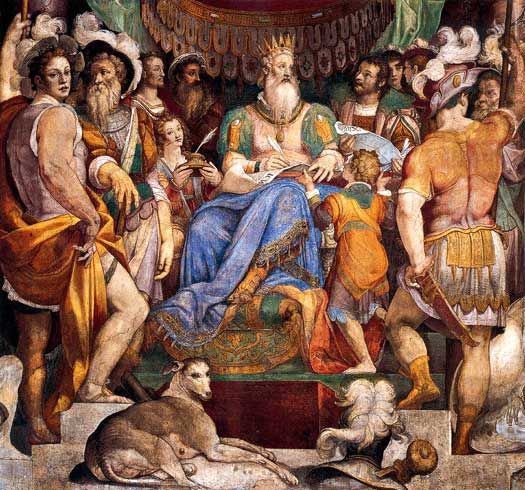
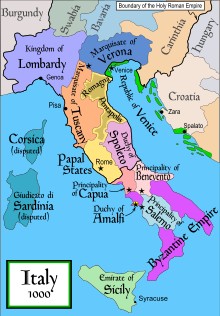
Normans – The Normans or north men were the people who gave their name to Normandy, a region in northern France who were descendants of Norse Viking conquerors of the territory and the native population of Frankish and Gallo-Roman stock. Their identity emerged initially in the first half of the 10th century, and gradually evolved over succeeding centuries. They played a major political, military, and cultural role in medieval Europe and even the Near East. They were famed for their martial spirit and eventually for their Christian piety. They quickly adopted the Romance language of the land they settled, their dialect becoming known as Norman or Norman-French, an important literary language. The Duchy of Normandy, which they formed by treaty with the French crown, was one of the great fiefs of medieval France. The Normans are famed both for their culture, such as their unique Romanesque architecture, and their musical traditions, as well as for their military accomplishments and innovations. Norman adventurers established a kingdom in Sicily and southern Italy by conquest, and a Norman expedition on behalf of their duke, William the Conqueror, led to the Norman Conquest of England. Norman influence spread from these new centers to the Crusader States in the Near East, to Scotland and Wales in Great Britain, and to Ireland.
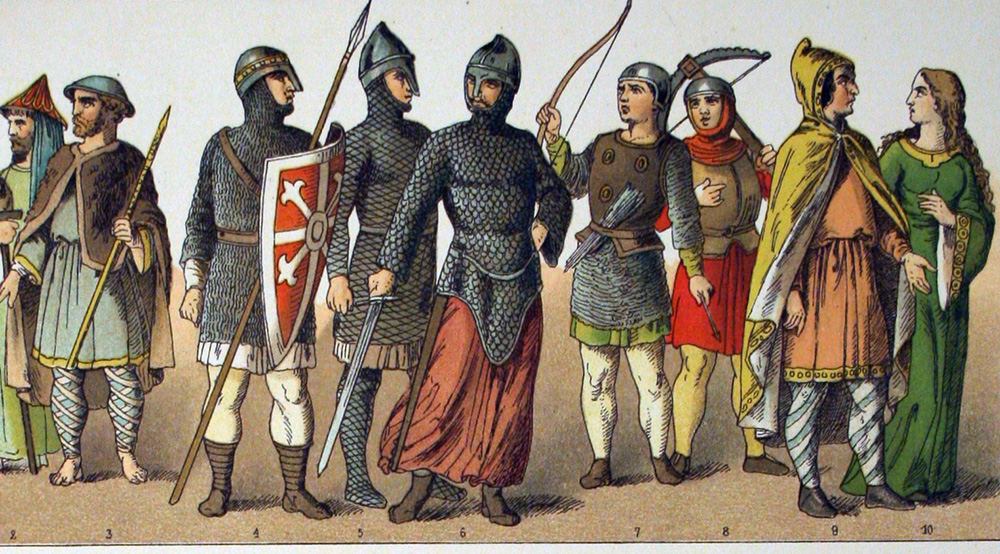
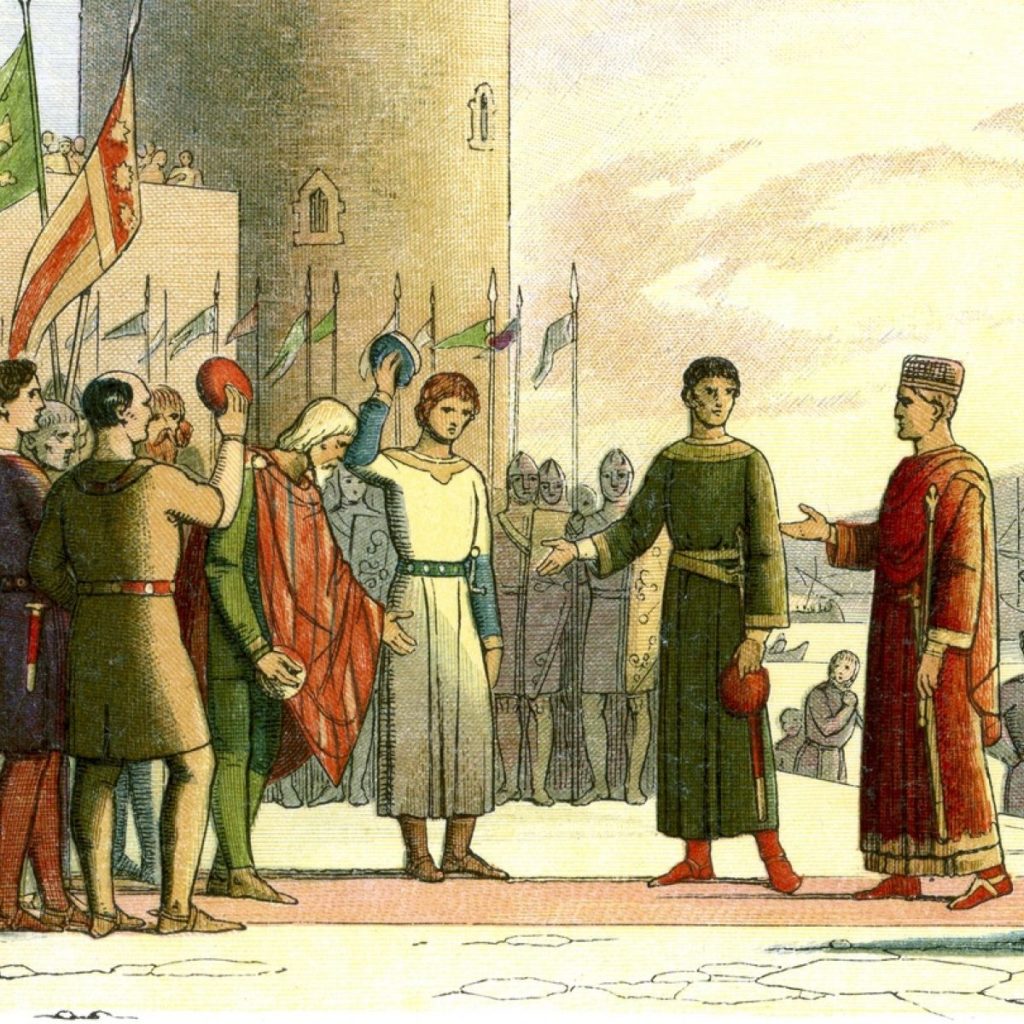
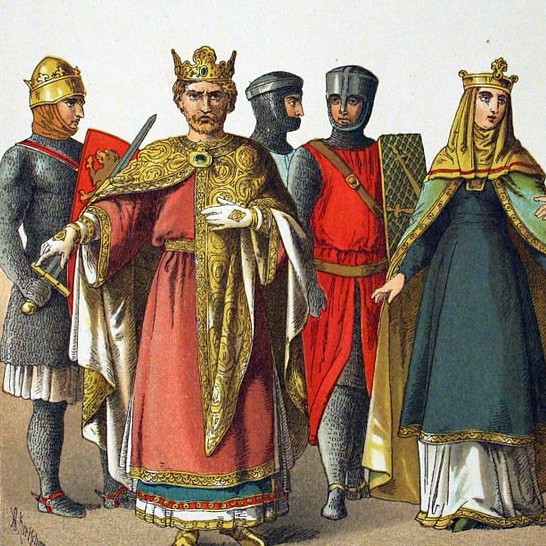
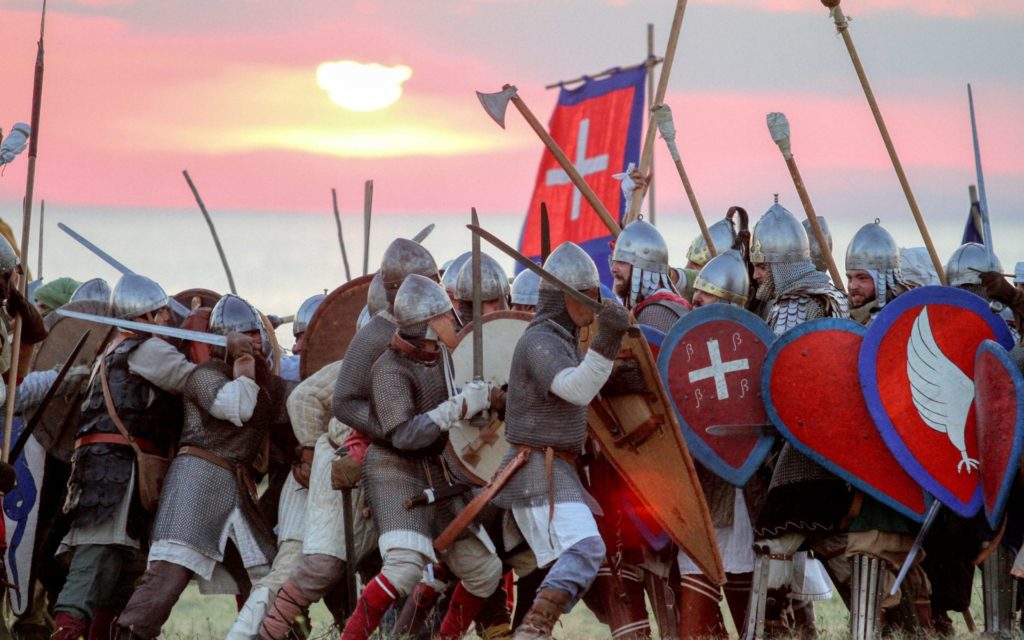
Picts – The Picts were a group of Late Iron Age and Early Mediaeval Celtic people living in ancient eastern and northern Scotland. There is an association with the geographical distribution of brochs, Brythonic place name elements, and Pictish stones. Picts are recorded from before the Roman conquest of Britain until the 10th century, when they are thought to have merged with the Gaels. They lived to the north of the rivers Forth and Clyde, and spoke the extinct Pictish language, thought to have been related to the Brythonic languages spoken by the Britons to the south. They are assumed to have been the descendants of the Caledonii and other tribes named by Roman historians. Pictland, also known as Pictavia, gradually merged with the Gaelic kingdom of Dál Riata to form the Kingdom of Alba (Scotland). Alba expanded, absorbing the Brythonic kingdom of Strathclyde and Bernician Lothian, and by the 11th century the Pictish identity had been subsumed into the “Scots” amalgamation of peoples.
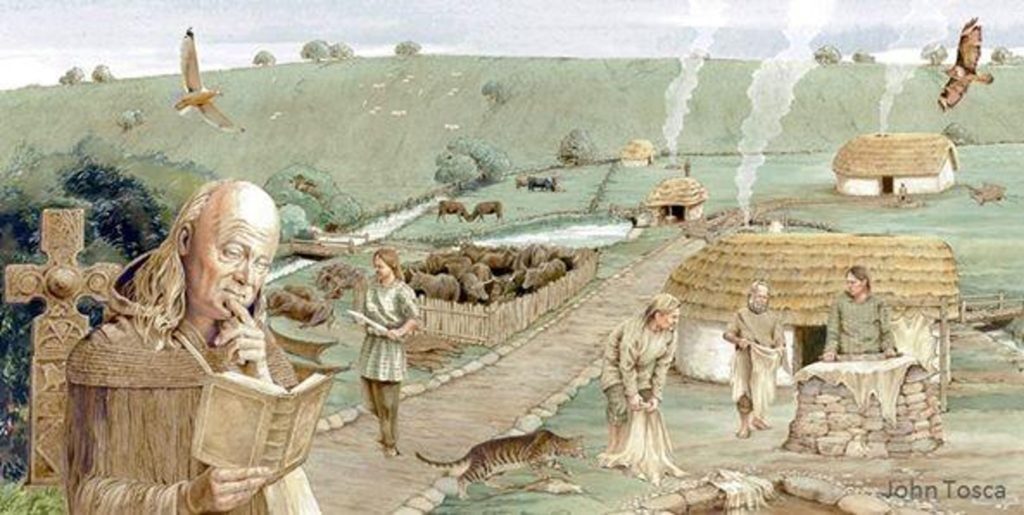
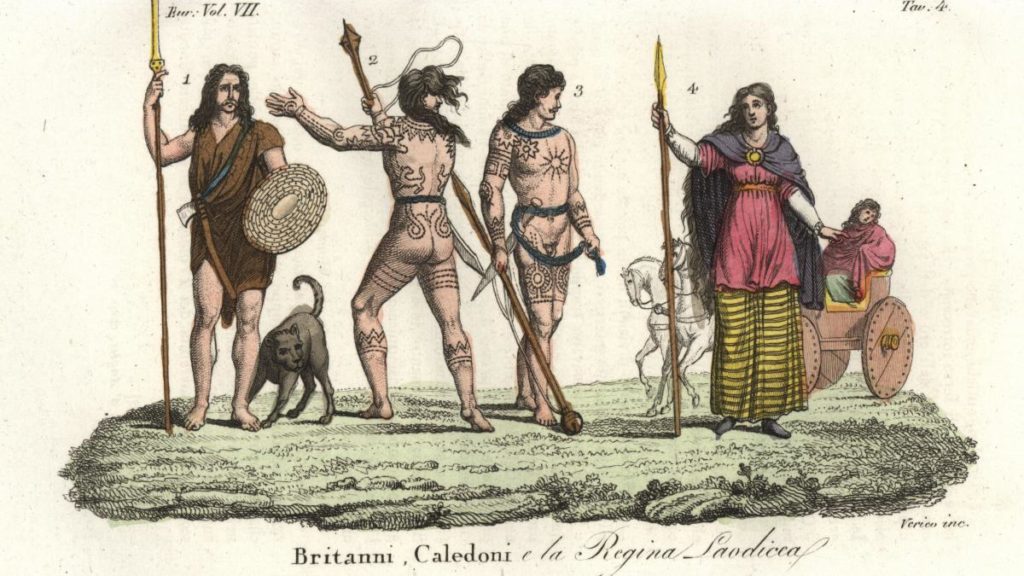
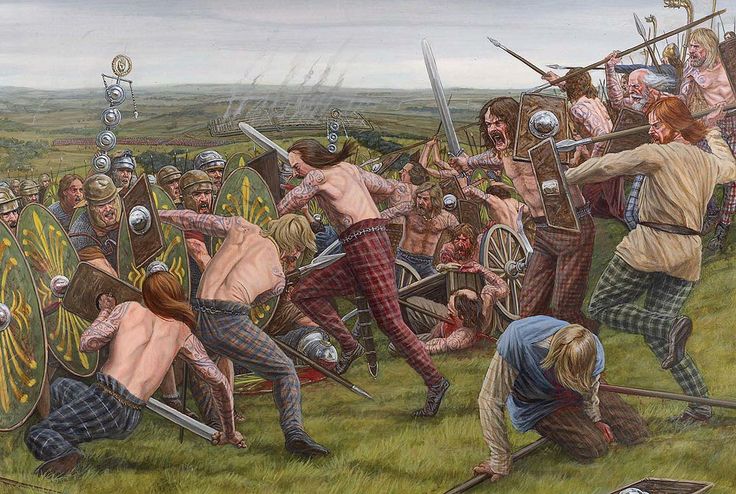
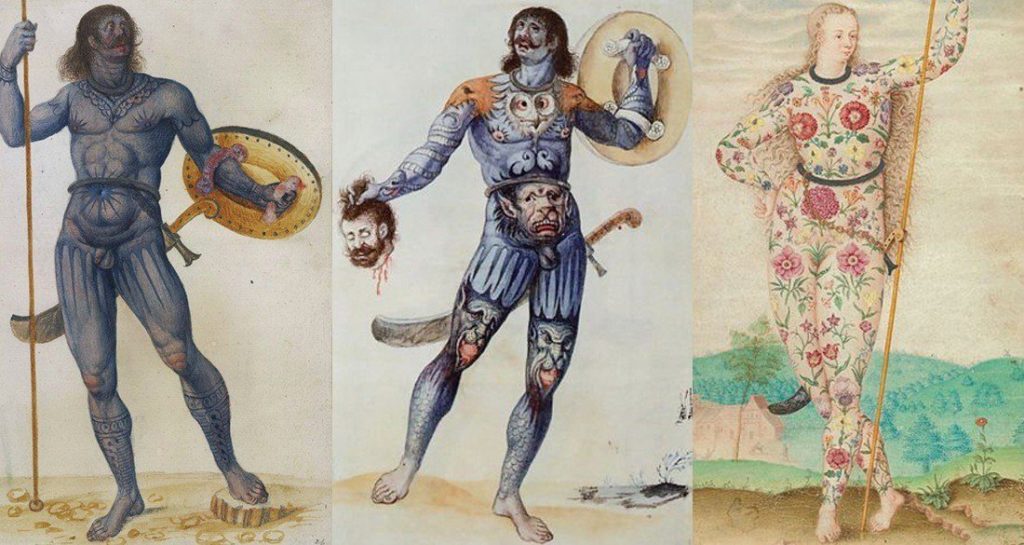
Portuguese – The Portuguese are a nation and ethnic group native to the country of Portugal, in the west of the Iberian peninsula of south-west Europe. Their language is Portuguese, and Roman Catholicism is the predominant religion. Due to the large historical extent of the Portuguese Empire and the colonization of territories in Africa, Asia and the Americas, as well as historical and recent emigration, Portuguese communities can be found in many diverse regions around the globe, and a large Portuguese diaspora exists.


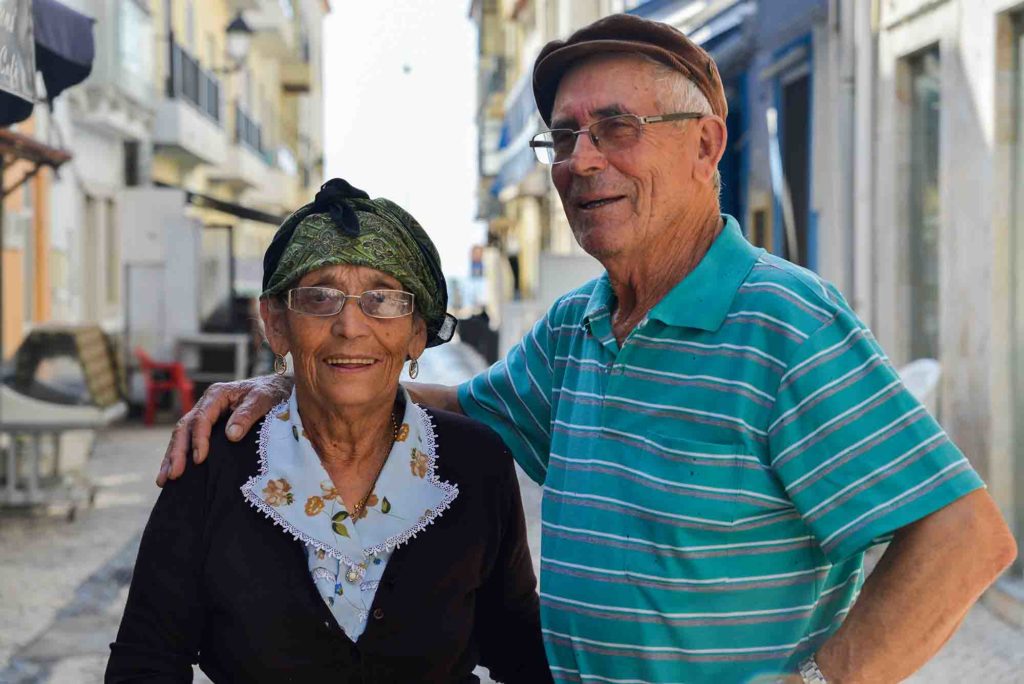
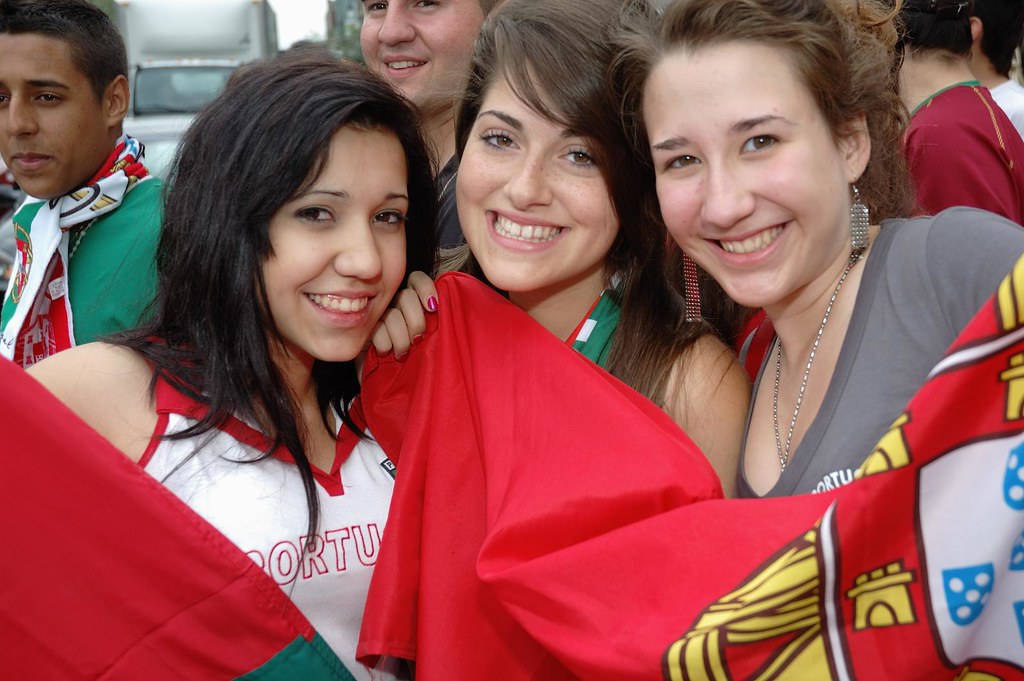
Saxons– The Saxons (Latin: Saxones, Old English: Seaxe, Old Saxon: Sahson, Low German: Sassen, Welsh: Saeson) were a confederation of Germanic tribes on the North German plain, some of whom migrated to the British Isles during the Middle Ages and formed part of the merged group of Anglo-Saxons that would eventually carve out the first united Kingdom of England. The Saxons were originally Ingvaeonic tribes, whose earliest known area of settlement is Northern Albingia, an area approximately that of modern Holstein. This area overlapped the area of the Angles, a tribe with which they were frequently intricately linked. Saxons participated in the Germanic settlement of Britain during and after the fifth century. It is unknown how many migrated from the continent to Britain, though estimates for the total number of Anglo-Saxon settlers are around two hundred thousand. During the Middle Ages, because of international Hanseatic trading routes and contingent migration during the Middle Ages, Saxons mixed with and had strong influences upon the languages and cultures of the North Germanicand Baltic and Finnic peoples, and also upon the Polabian Slavs and Pomeranian West Slavic people.
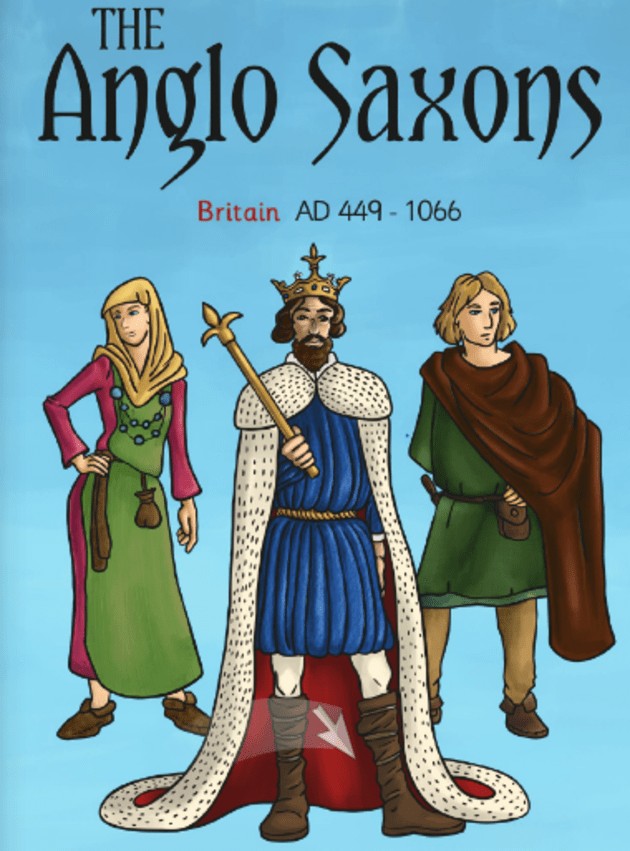
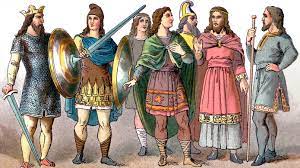
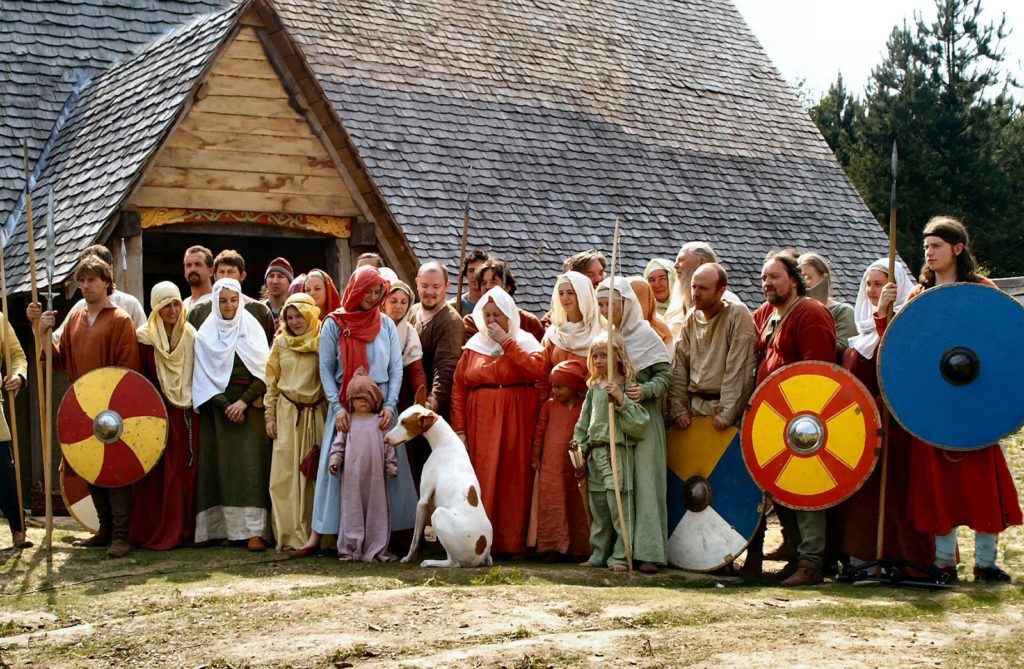
Scottish – The Scottish people (Scots Gaelic: Albannaich), or Scots, are a nation and ethnic group native to Scotland. Historically they emerged from an amalgamation of the Picts and Gaels, incorporating neighboring Britons to the south as well as Germanic peoples such as the Anglo-Saxons and the Norse. Later the Normans also had some influence. In modern use, “Scottish people” or “Scots” is used to refer to anyone whose linguistic, cultural, family ancestral or genetic origins are from within Scotland. The Latin word Scotti originally applied to a particular, 5th century, Goidelic tribe that inhabited Ireland.

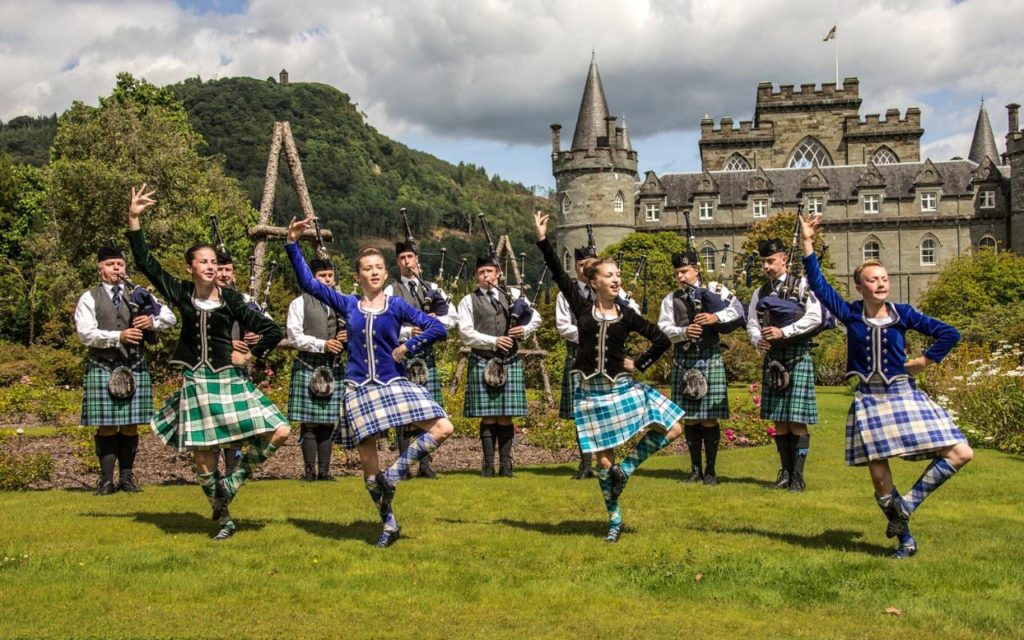
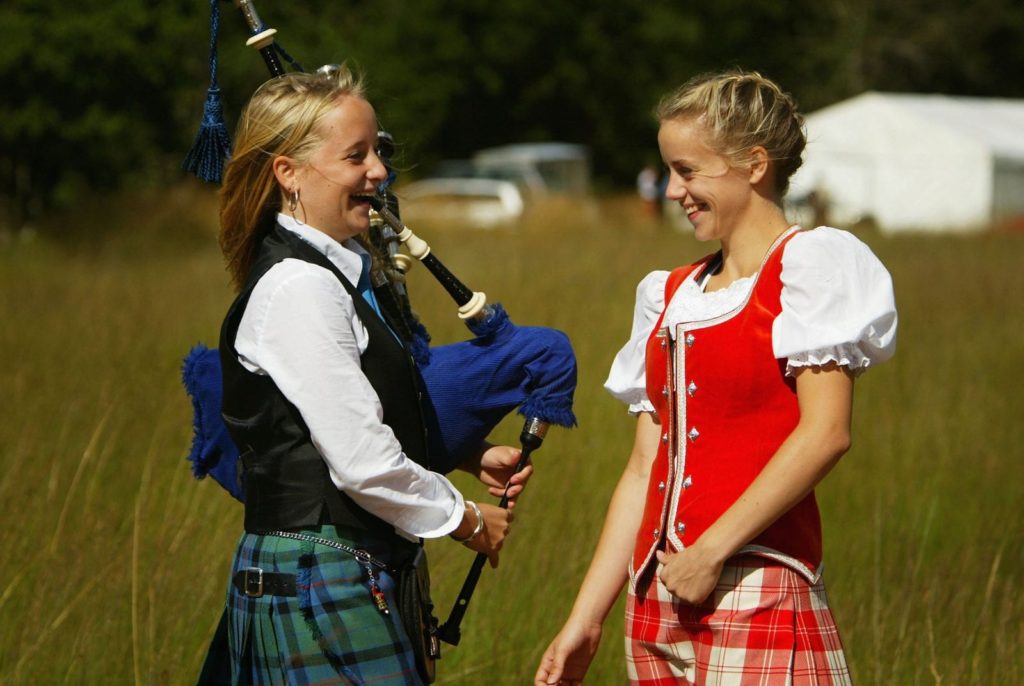
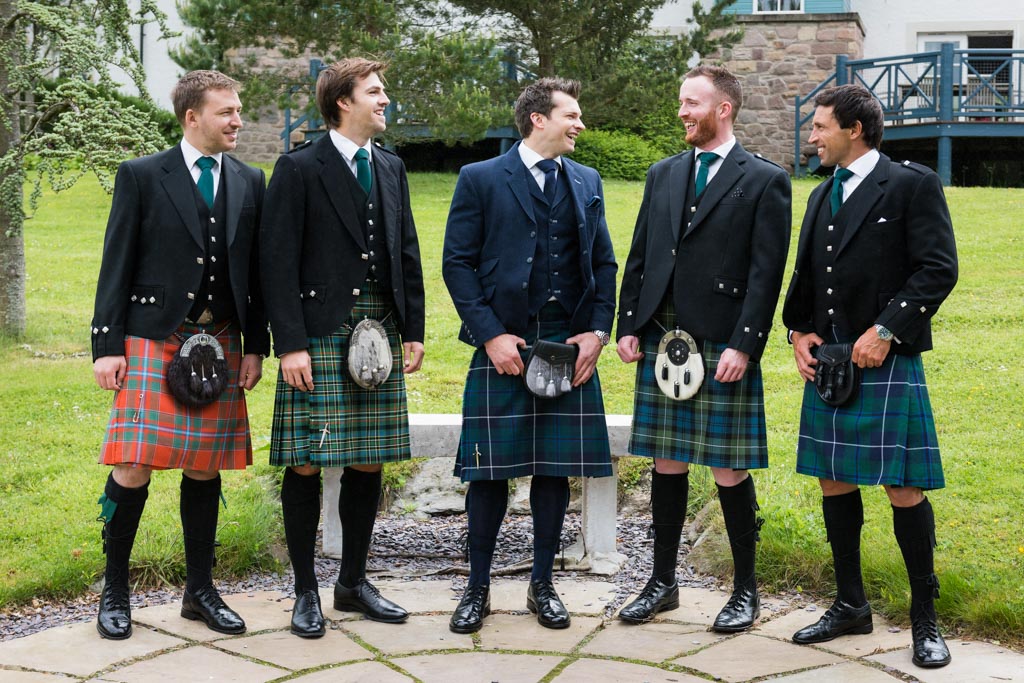
Slavs are the largest European ethnolinguistic group. They speak the various Slavic languages, belonging to the larger Balto-Slavic branch of the Indo-European languages. Slaves are greographically distributed throughout northern Eurasia, mainly inhabiting Central and Eastern Europe, and the Balkans to the West and Siberia to the East. A large Slavic minority is also scattered across the Baltics states and Central Asia, while a substantial Slavic diaspora is found throughout the Americas as a result of immigration.Present-day Slavs are classified into East Slavs (Belarussians, Russians, Rusyns, and Ukrainians. West Slaves include Czechs, Kashtubs, Poles, Slovaks, Silesians and Sorbs. and South Slavs are chiefly Bosniaks, Bulgarians, Croats, Macedonians, Montenegins, Serbs and Slovenes. Most Slavs and Christian.


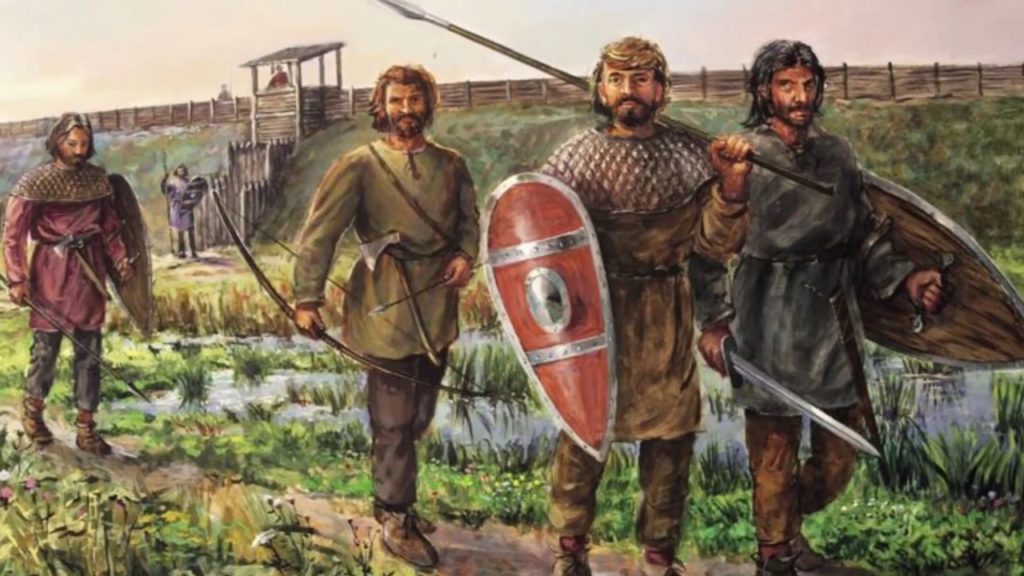
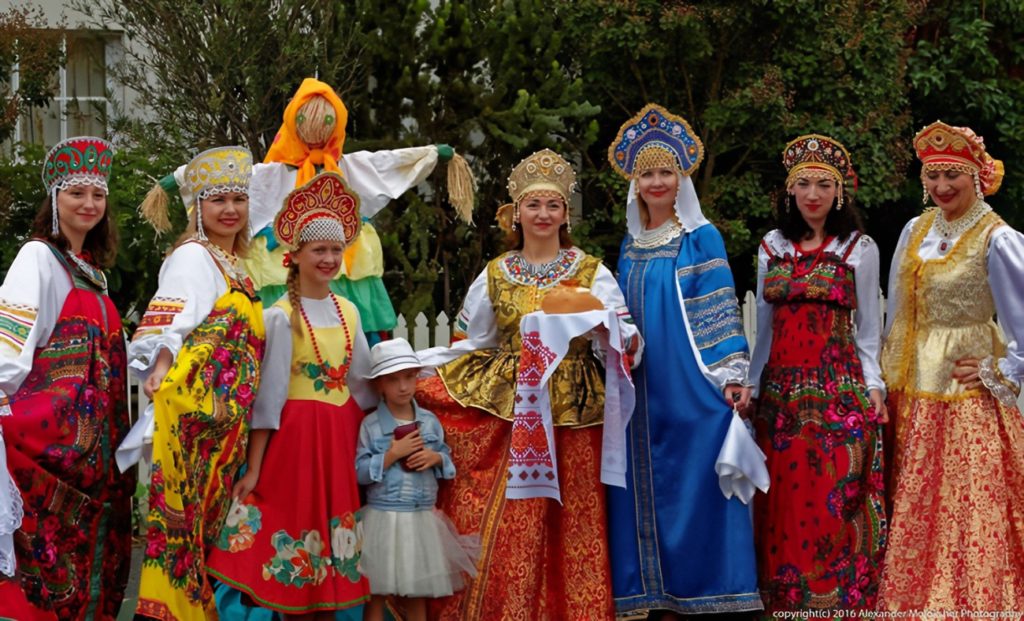
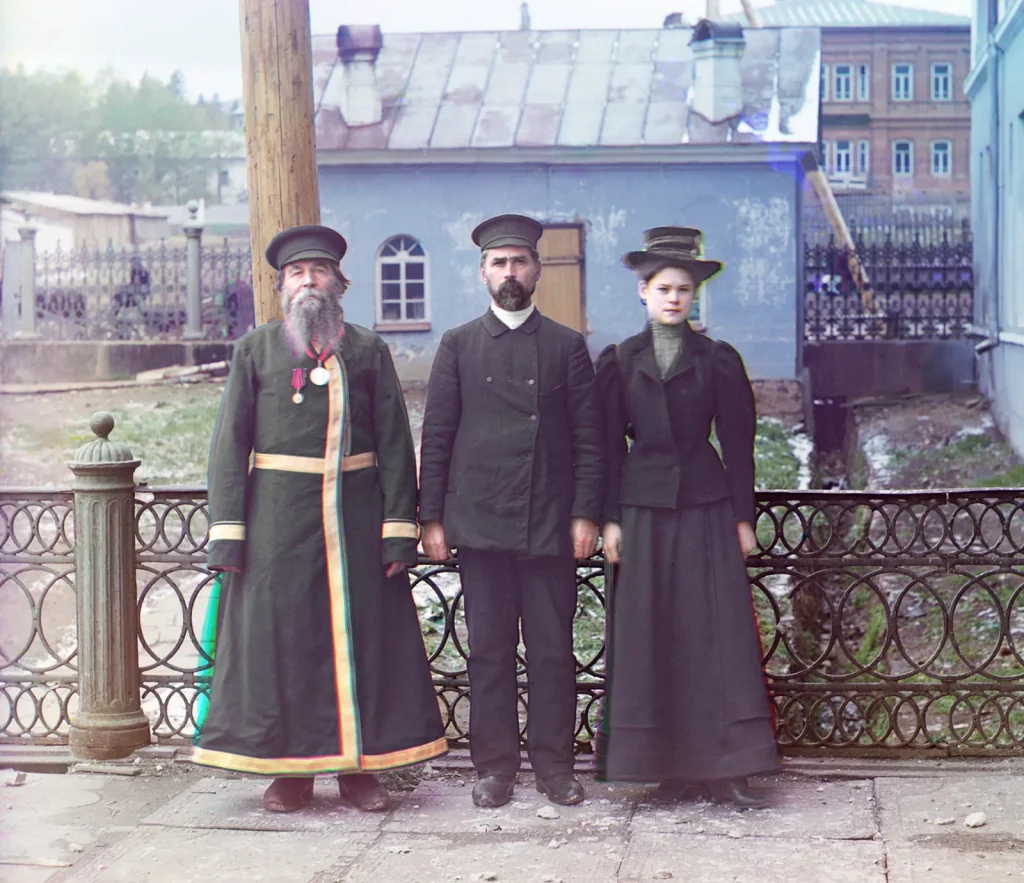
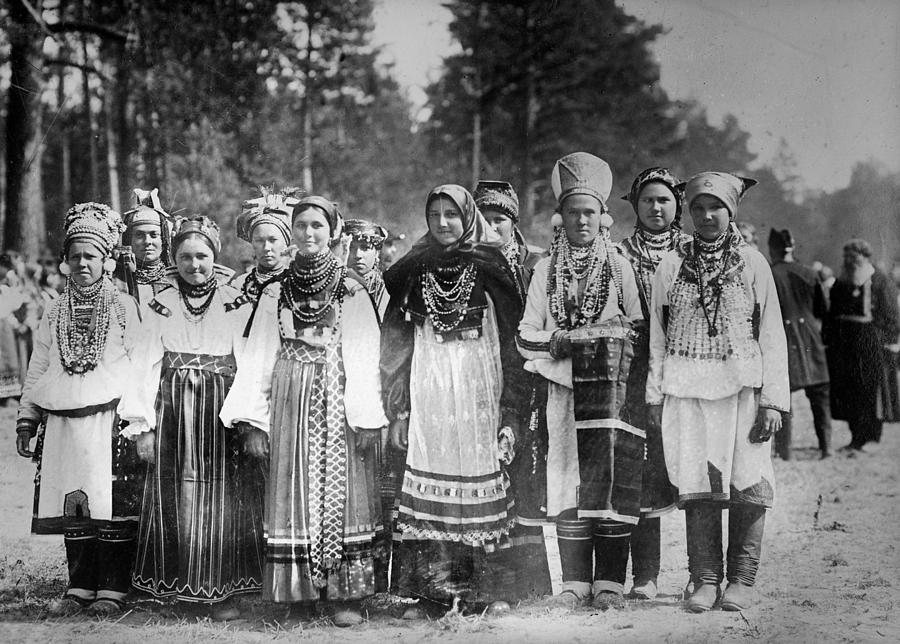
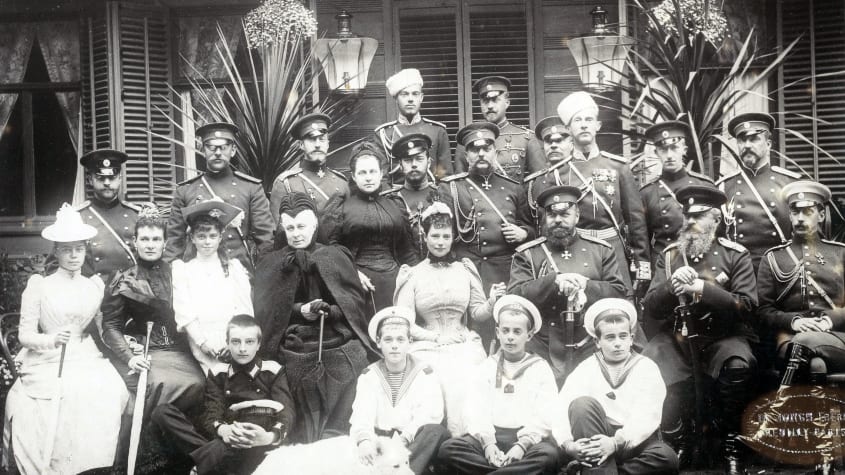
Spaniards – The term Spanish people, or Spaniards (Spanish: los españoles) has two distinct meanings: Traditionally, it applies to people native to any part of Spain. More recently, it has also come to have a legal meaning, referring to people who hold Spanish citizenship. Within Spain there are several nationalisms and regionalisms, reflecting the country’s complex history. The official language of Spain is Spanish (also known as Castilian), a standard language based on the mediaeval dialect of the Castilians of north-central Spain. There are several commonly spoken regional languages. Except for Basque, the languages native to Spain are Romance languages. There are substantial populations outside Spain with ancestors who emigrated from Spain, most notably in Latin America.
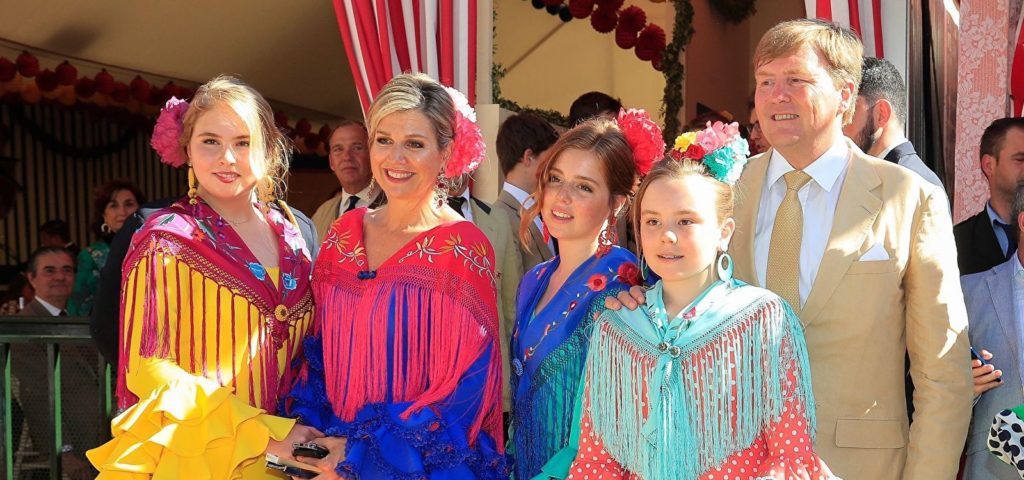

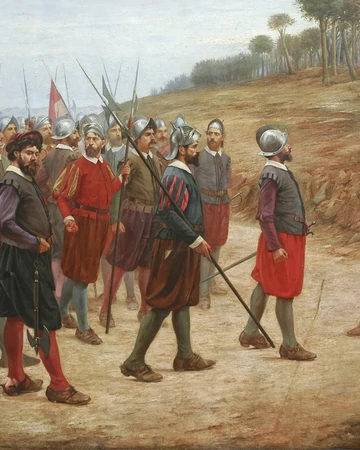
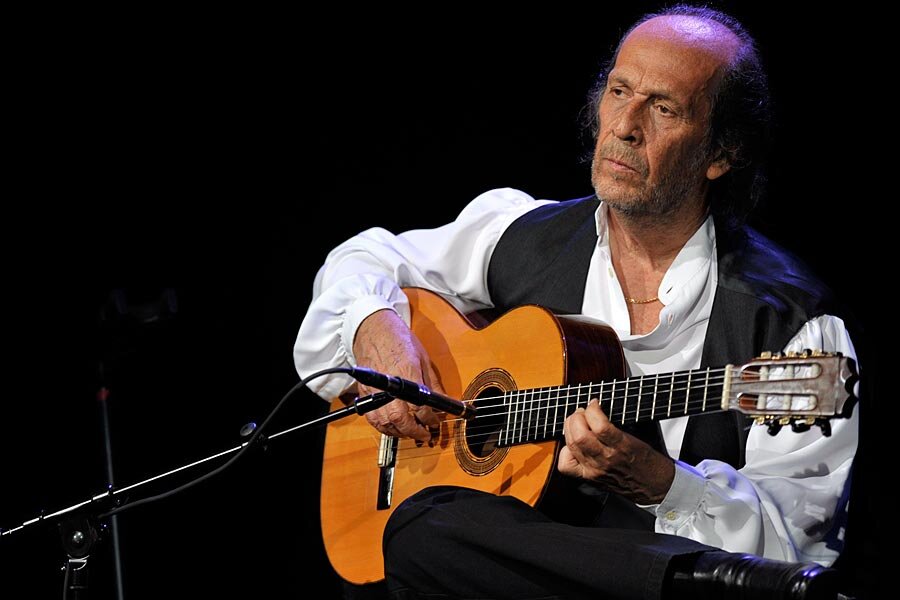

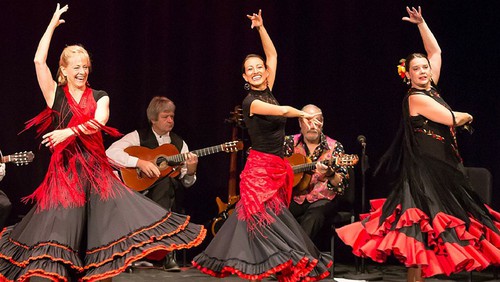
Swedes – Swedes (Swedish: svenskar) are a nation and ethnic group native to Sweden, mostly inhabiting Sweden and the other Nordic countries, with descendants living in a number of countries. Sweden enters proto-history with the Germania of Tacitus in AD 98. In Germania 44, 45 he mentions the Swedes (Suiones) as a powerful tribe (distinguished not merely for their arms and men, but for their powerful fleets) with ships that had a prow in both ends (longships). Which kings (kuningaz) ruled these Suiones is unknown, but Norse mythology presents a long line of legendary and semi-legendary kings going back to the last centuries BC. As for literacy in Sweden itself, the runic script was in use among the south Scandinavian elite by at least the 2nd century AD, but all that has come down to the present from the Roman Period is curt inscriptions on artefacts, mainly of male names, demonstrating that the people of south Scandinavia spoke Proto-Norse at the time, a language ancestral to Swedish and other North Germanic languages.
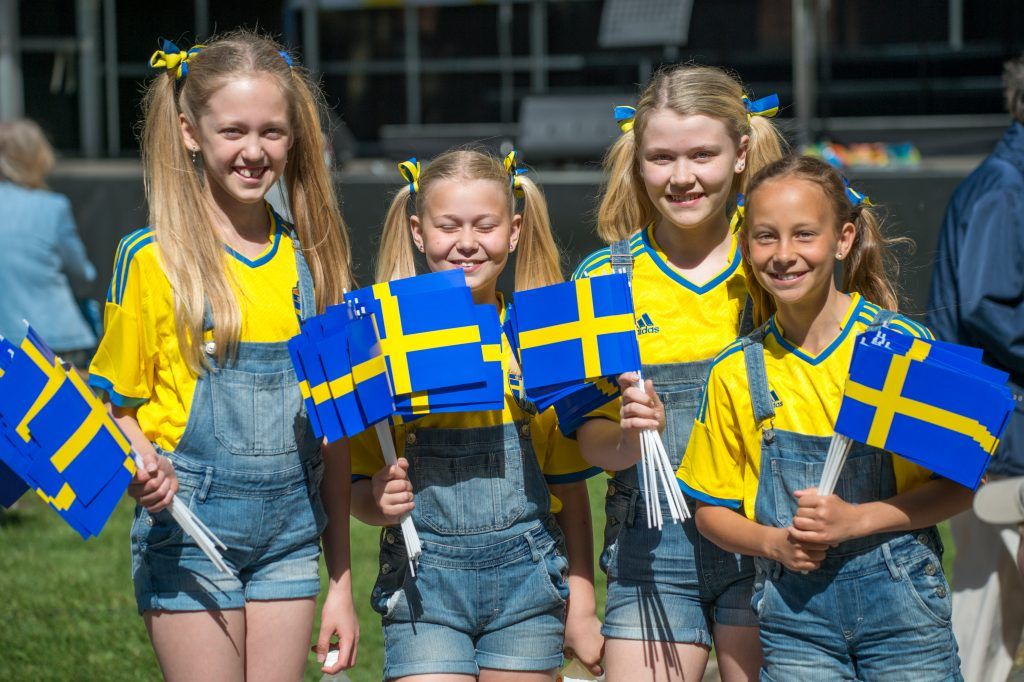

Vandals – The Vandals were an East Germanic tribe who in 429 under King Genseric entered Africa and by 439 established a kingdom which included the Roman Africa province, besides the islands of Sicily, Corsica, Sardinia, Malta and the Balearics. In 455, they sacked the city of Rome. Their kingdom collapsed in the Vandalic War of 533–4, in which Justinian I managed to reconquer the Africa province for the Eastern Roman (Byzantine) Empire. Renaissance and Early Modern writers characterized the Vandals as barbarians, “sacking and looting” Rome. This led to the use of the term “vandalism”, to describe any senseless destruction, particularly the “barbarian” defacing of artworks. However, modern historians tend to regard the Vandals during the transitional period (from Late Antiquity to the Early Middle Ages) as perpetuators, not destroyers, of Roman culture.

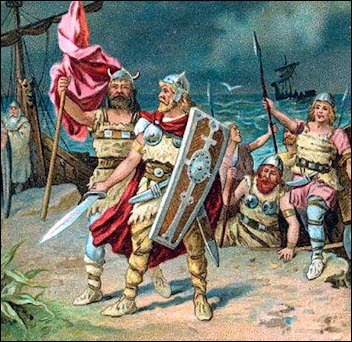
Vikings – The Vikings (from Old Norse víkingr) were the Norse explorers, warriors, merchants, and pirates who raided, traded, explored, and settled in wide areas of Europe, Asia and the North Atlantic islands from the late 8th to the mid-11th century. These Norsemen used their famed longships to travel as far east as Constantinople and the Volga River in Russia, and as far west as Iceland, Greenland, and Newfoundland, and as far south as Al-Andalus. This period of Viking expansion – known as the Viking Age– forms a major part of the medieval history of Scandinavia, Great Britain, Ireland and the rest of Europe. Popular conceptions of the Vikings often differ from the complex picture that emerges from archaeology and written sources. A romanticized picture of Vikings as Germanic noble savages began to take root in the 18th century, and this developed and became widely propagated during the 19th-century Viking revival. The received views of the Vikings as violent brutes or intrepid adventurers owe much to the modern Viking myth which had taken shape by the early 20th century. Current popular representations are typically highly clichéd, presenting the Vikings as familiar caricatures.
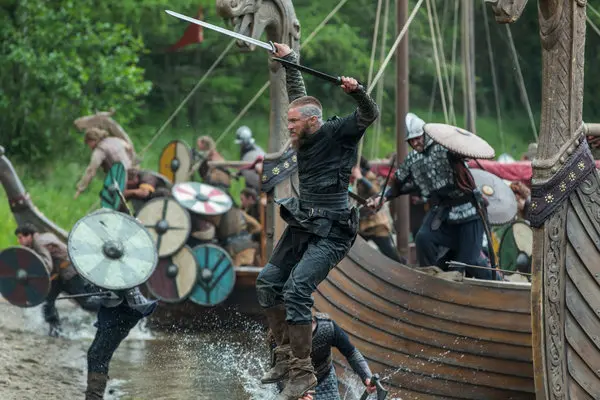
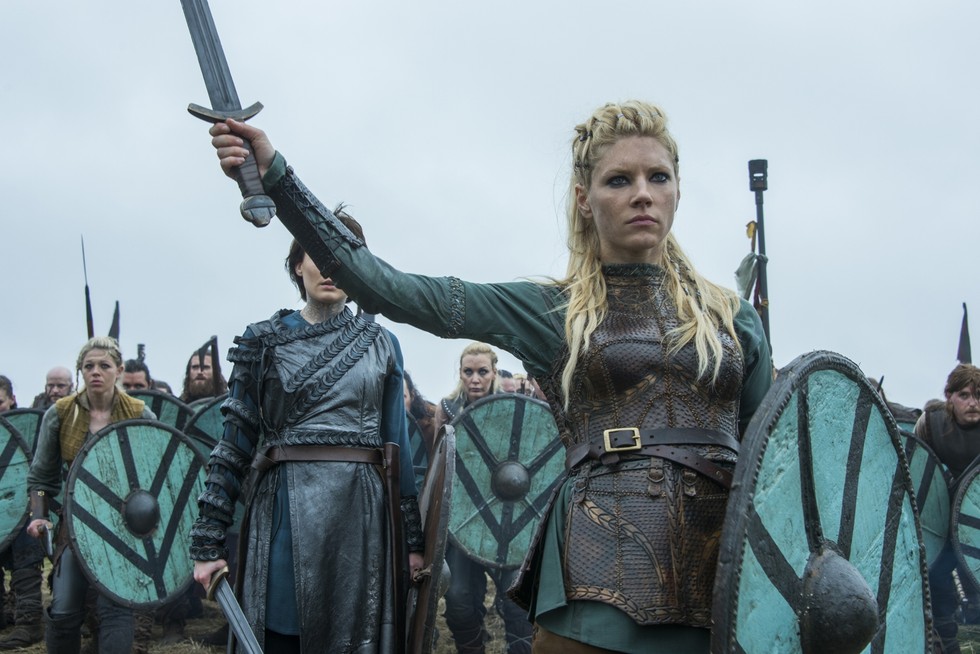
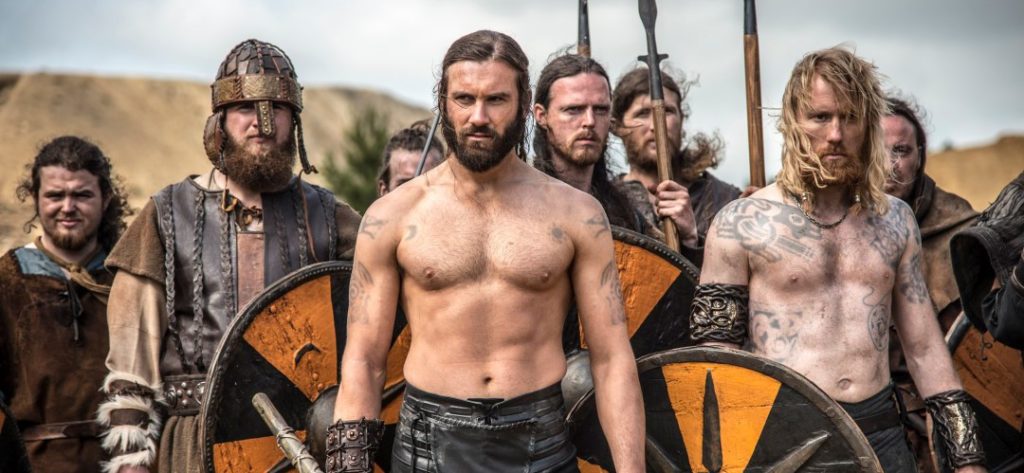
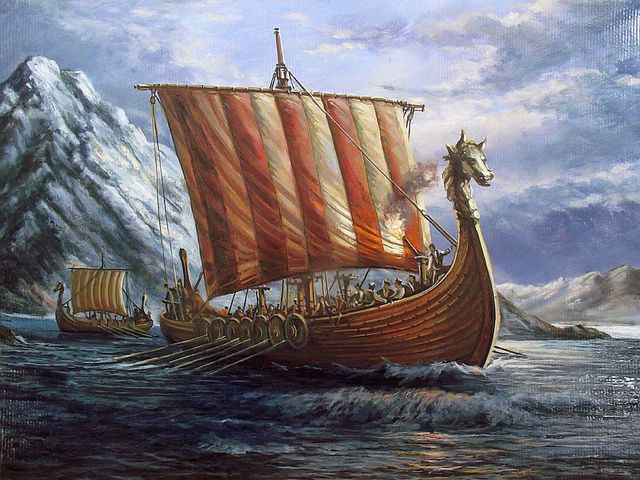
Welsh – The Welsh people (Welsh: Cymry) are an ethnic group and nation native to Wales and associated with the Welsh language. Welsh people historically spoke the Welsh language; however, in recent years English has predominated in most of Wales. During their time in Britain, the ancient Romans encountered tribes in present-day Wales that they called the Ordovices, the Demetae, the Silures and the Deceangli. The people of what is now Wales were not distinguished from the rest of the peoples of southern Britain; all were called Britons and spoke the common British language, a Brythonic Celtic tongue. The term Welsh people applies to people from Wales and people of Welsh ancestry perceiving themselves or being perceived as sharing a cultural heritage and shared ancestral origins. Today Wales is a country of the United Kingdom, and the majority of people living in Wales are British citizens.

